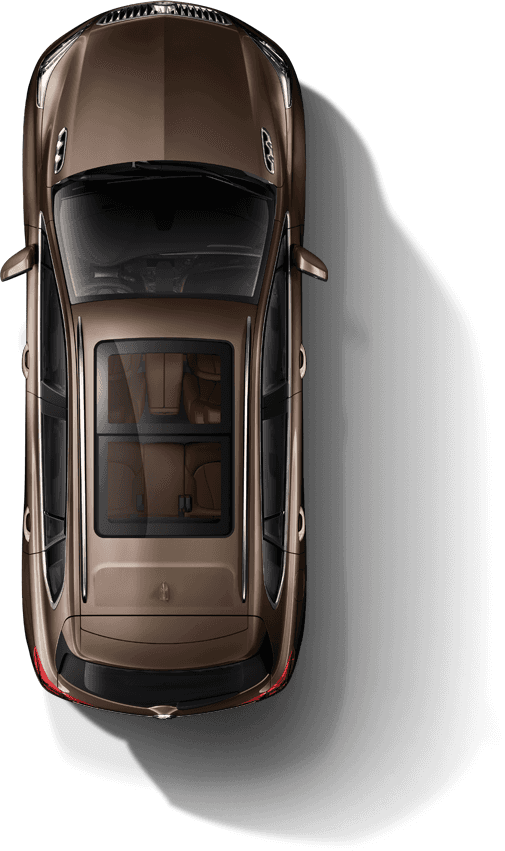
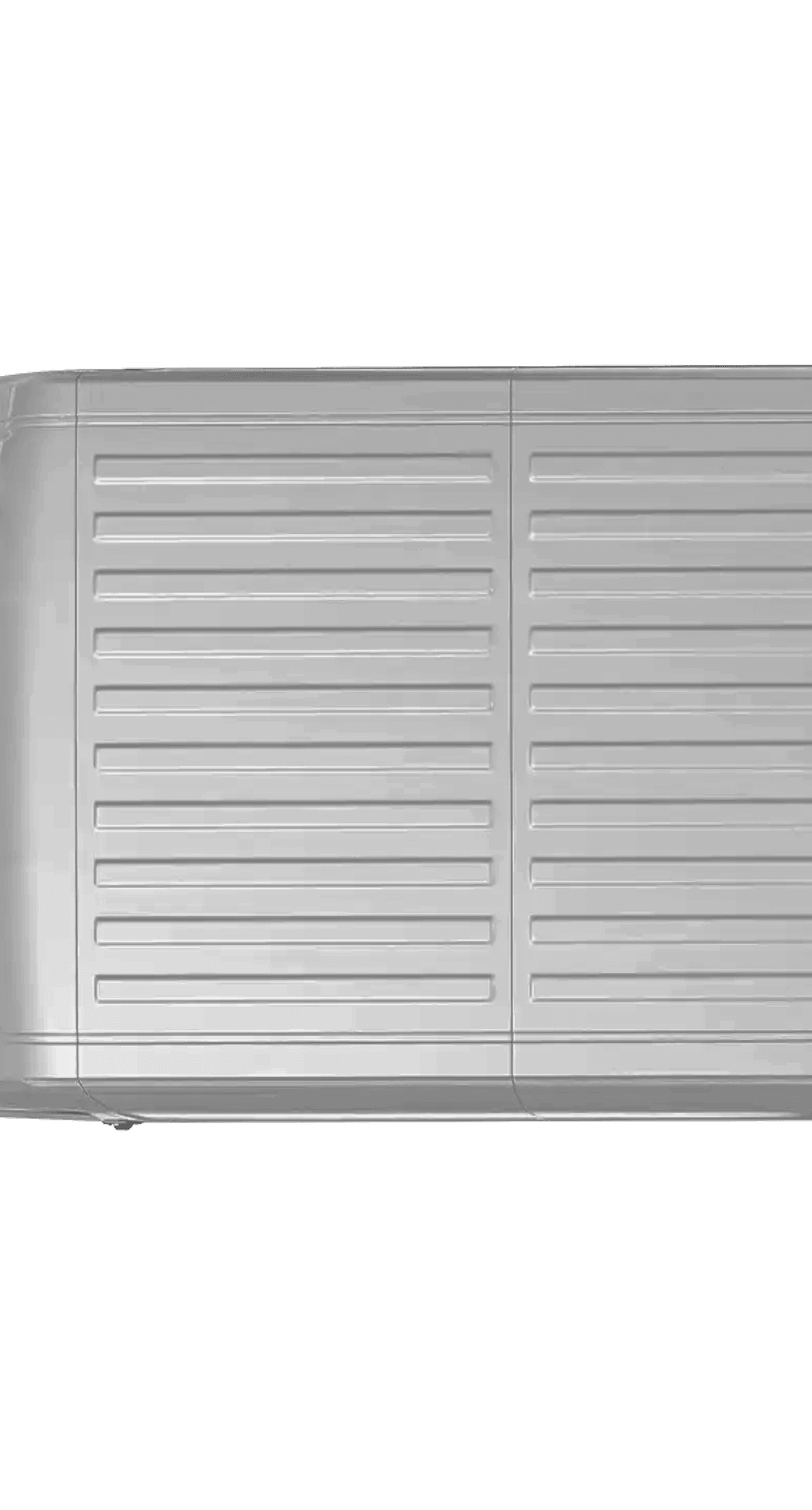
Creating connections for more than your trailer
Trust
The Future
Project Overview
Hitch towing can be a daunting task for the inexperienced user. From improper hitching to safety concerns, driving a vehicle with an attached trailer can prove a challenge for many.
In this project we researched emerging technology to design a trailer system that requires no hitch. We also focused on the onboarding process to establish trust with the user and enhance their experience with a hitchless trailer.
This project was designed and prototypes with design partner, Manual Galindo
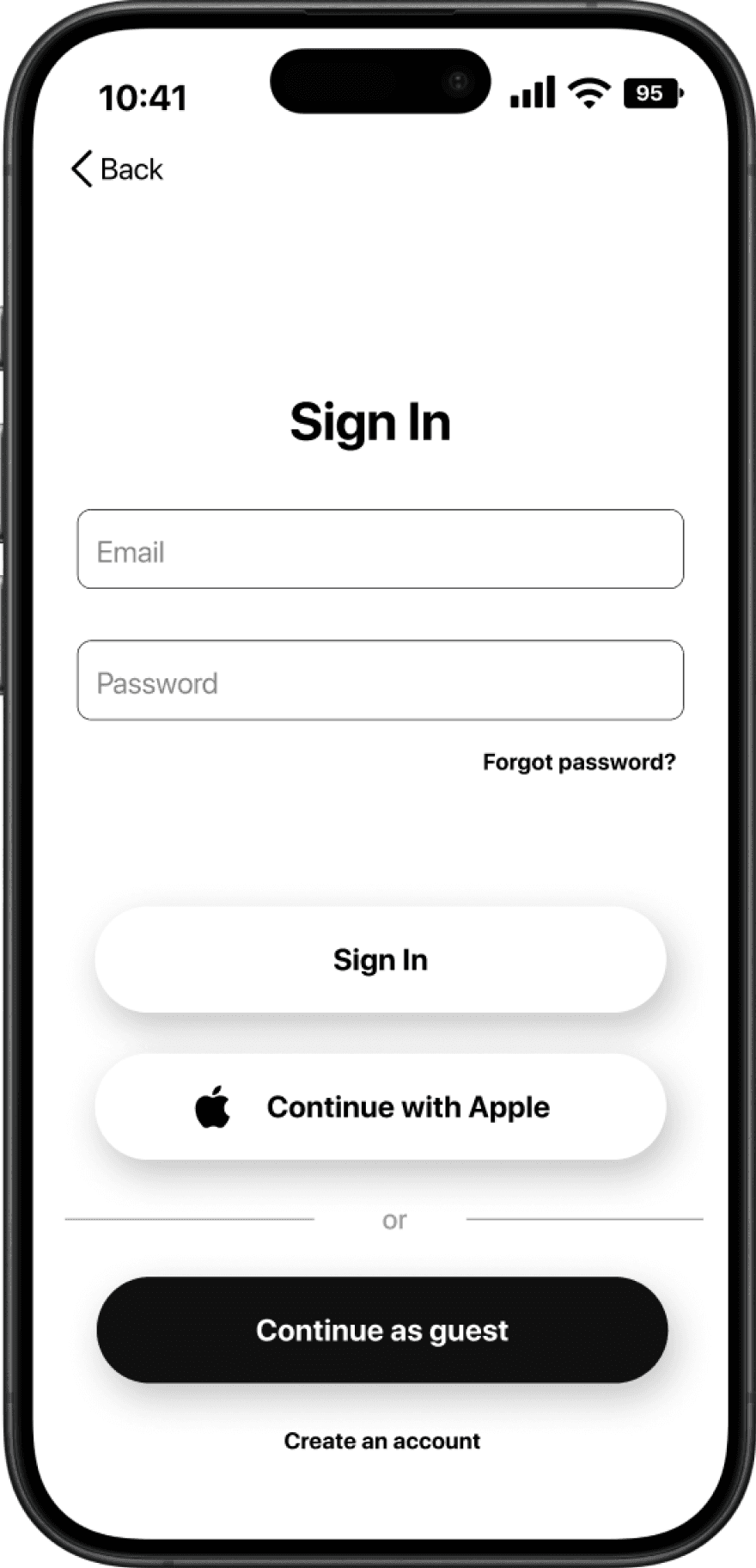
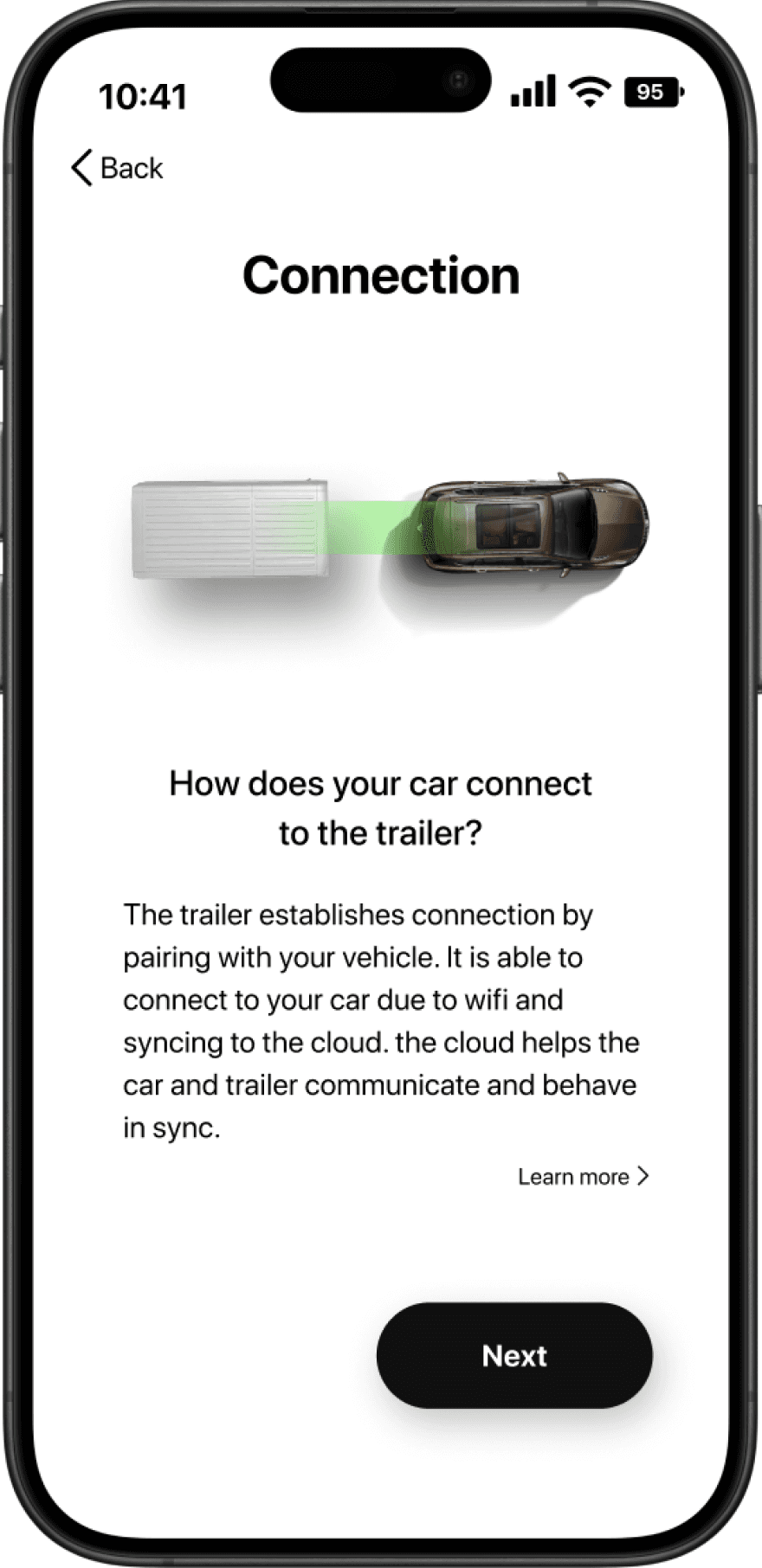
Background
New technology like the idea of hitch less trailers is an intimidating task to introduce, especially if it's intended to be used by the average user. To better utilize and adapt to the idea of hitch less trailers, we focused on the onboarding process to help create trust between the user and the system.
01 Motivation
02 Understand
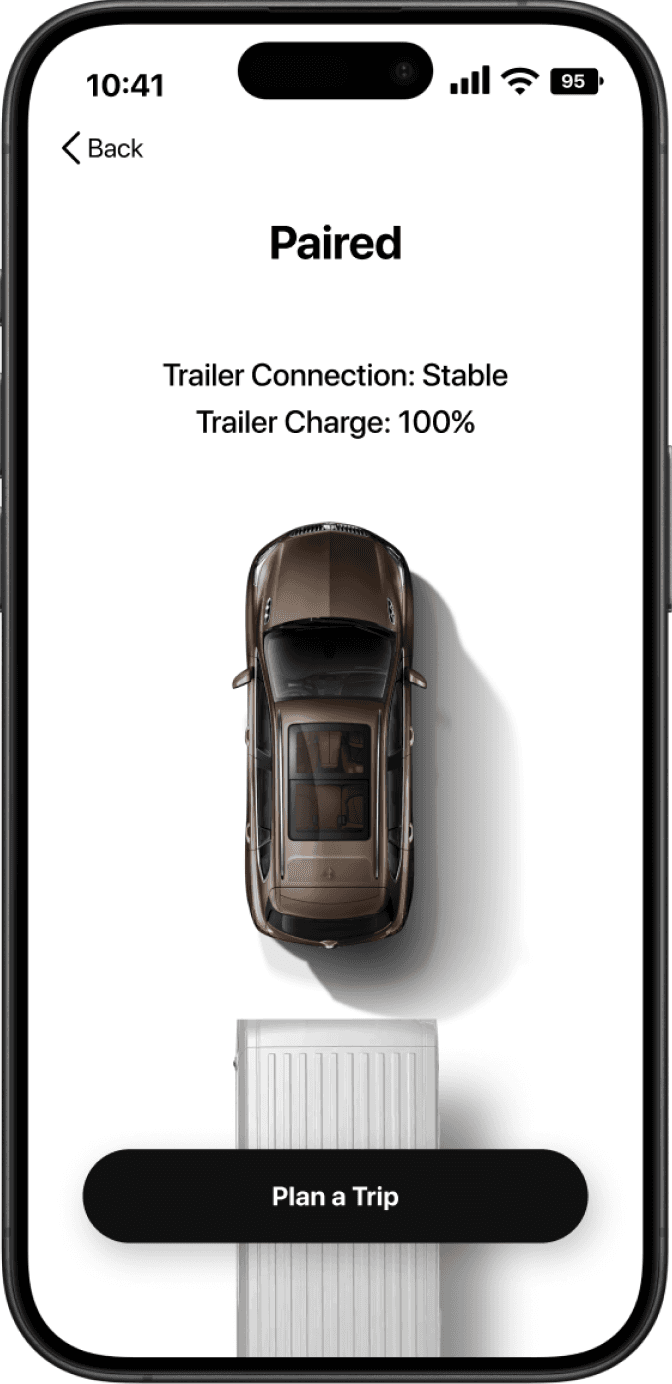
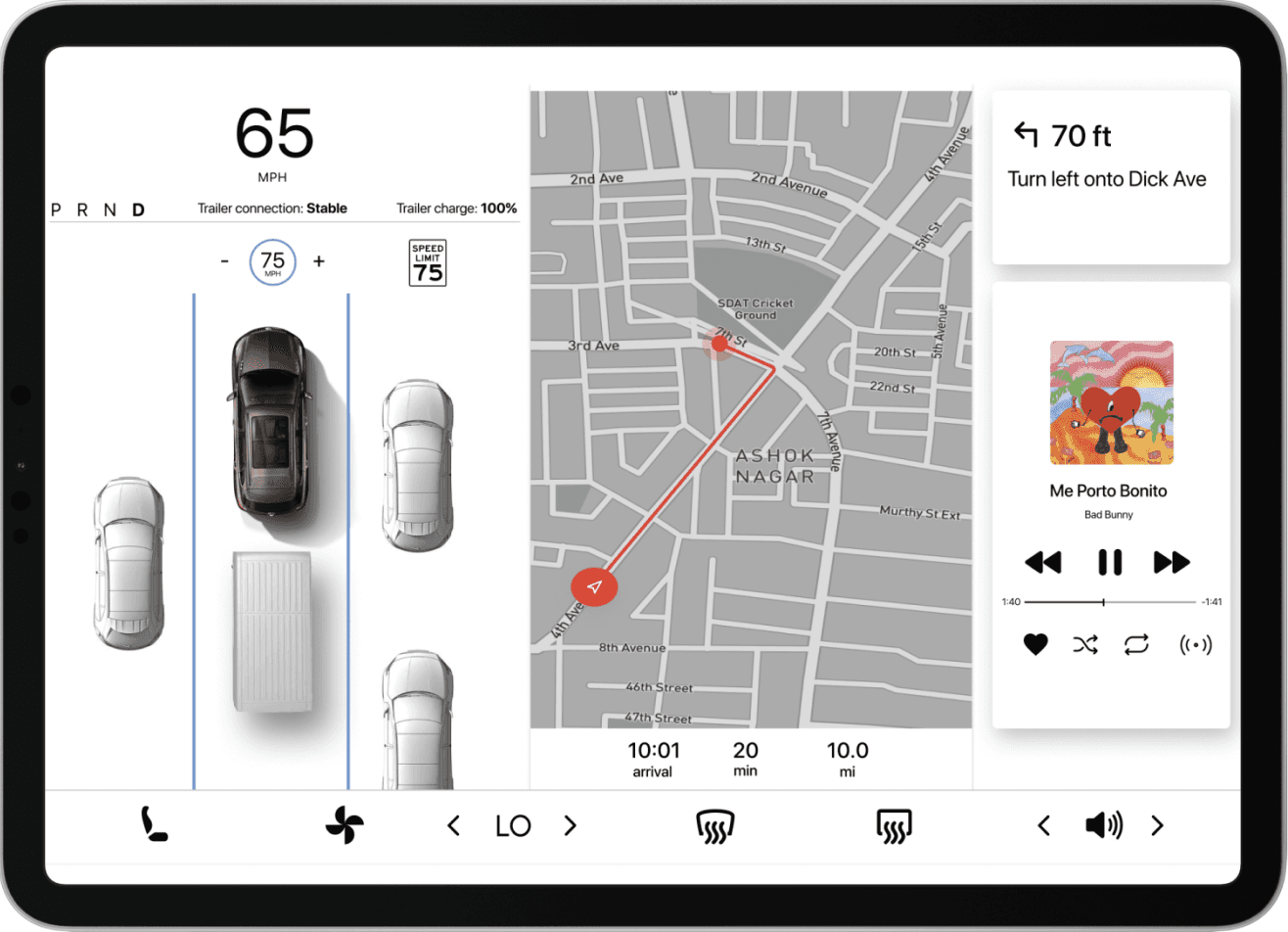
Research
We did extensive research to familiarize ourselves with the topic and conceptualize our designs. Some of the research methodologies we used were:
Ethnographic Research
We spoke to an employee at Home Depot and a current hitch-trailer user to gain insights on how the current trailer system is perceived and used today. We also test drove a Tesla to gain first hand experience with automated driving.
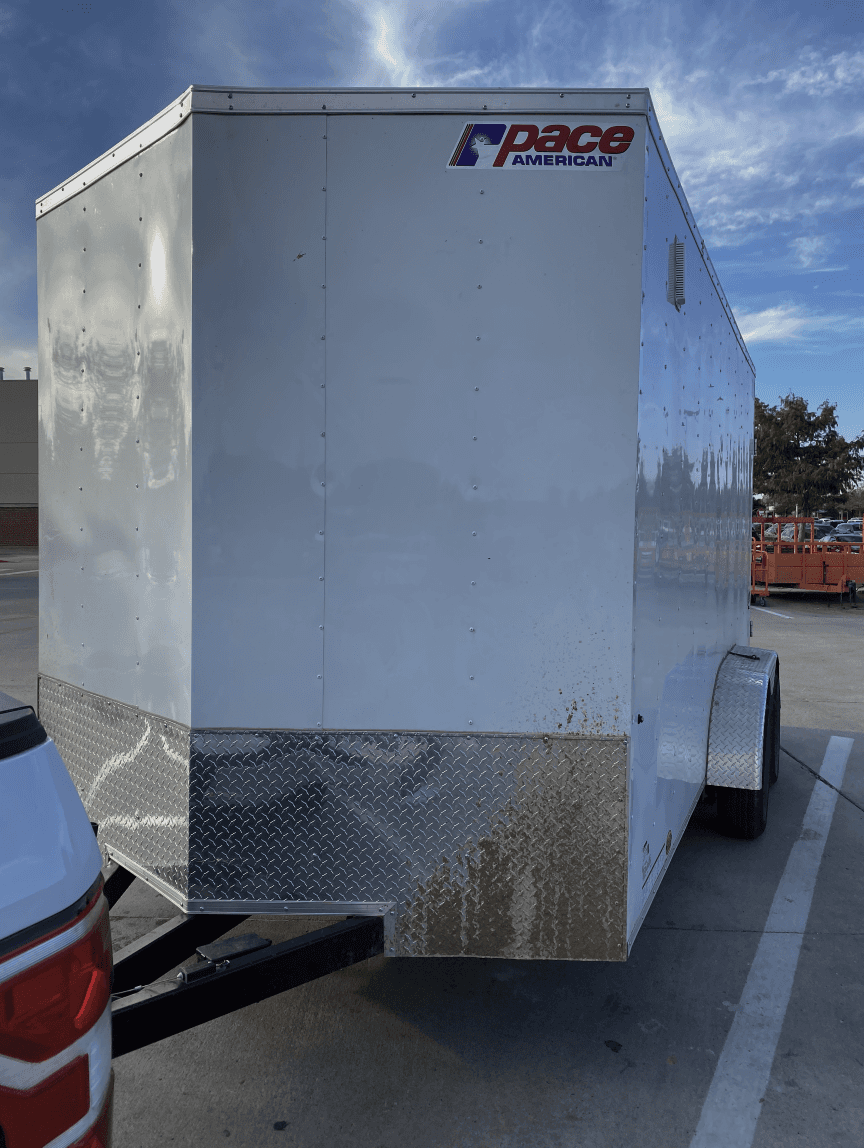
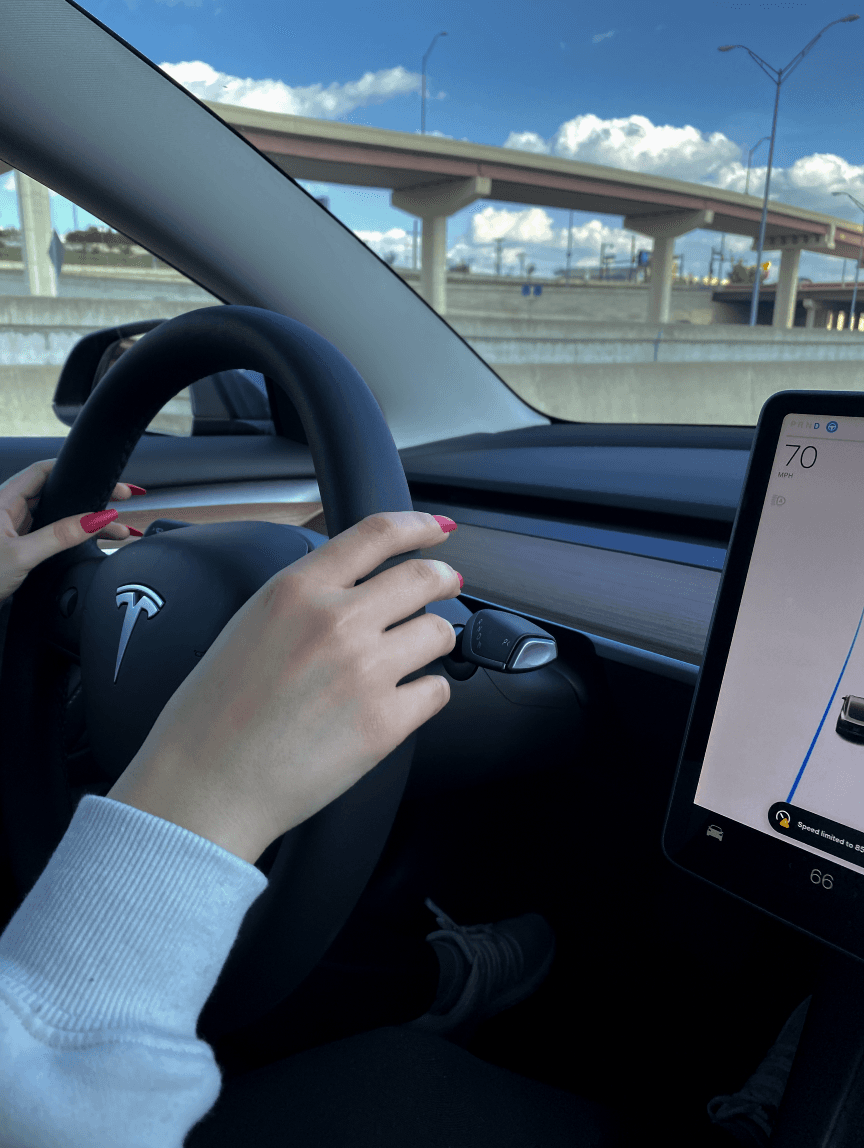
Home Depot interview
Tesla test drive
Secondary Research
We conducted secondary research on over 35 sources to learn about emerging technology that would make a hitch less trailer system possible.
Futures Wheel
We constructed a futures wheel to visualize direct and indirect consequences of a hitch less trailer system.
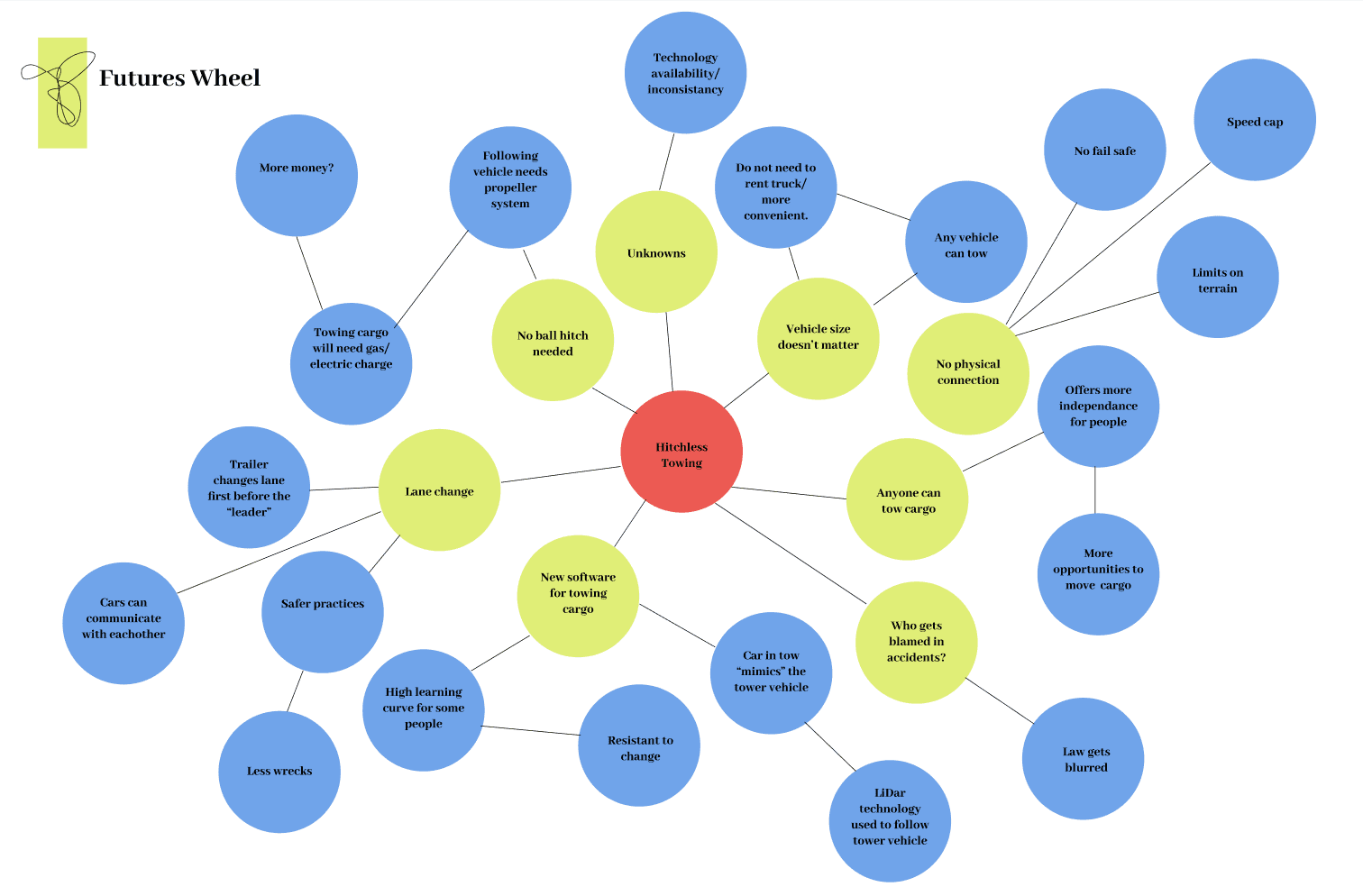
Futures Wheel
Assumption reversals
We wrote over 20 assumption reversals to try to spark new ways of addressing and solving potential problems
Journey Mapping
We created over 20 journey maps for our protopersonas to help us identify potential pain points.
Concept Mapping
We created concept maps to help us visualize potential designs for our hitch less trailer system.
Protopersonas
We developed 3 protopersonas to identify potential target audiences and inform our design decisions.
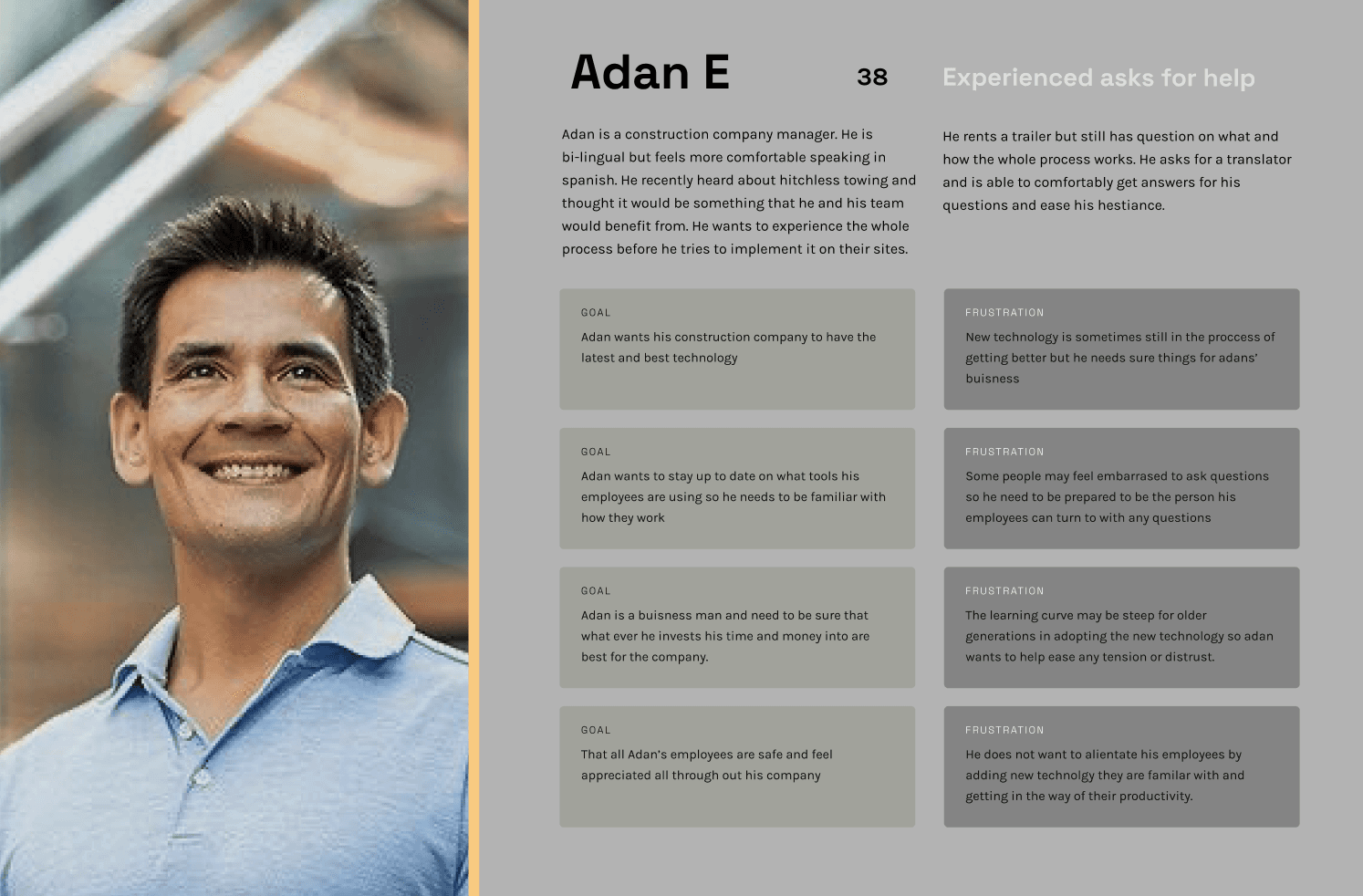

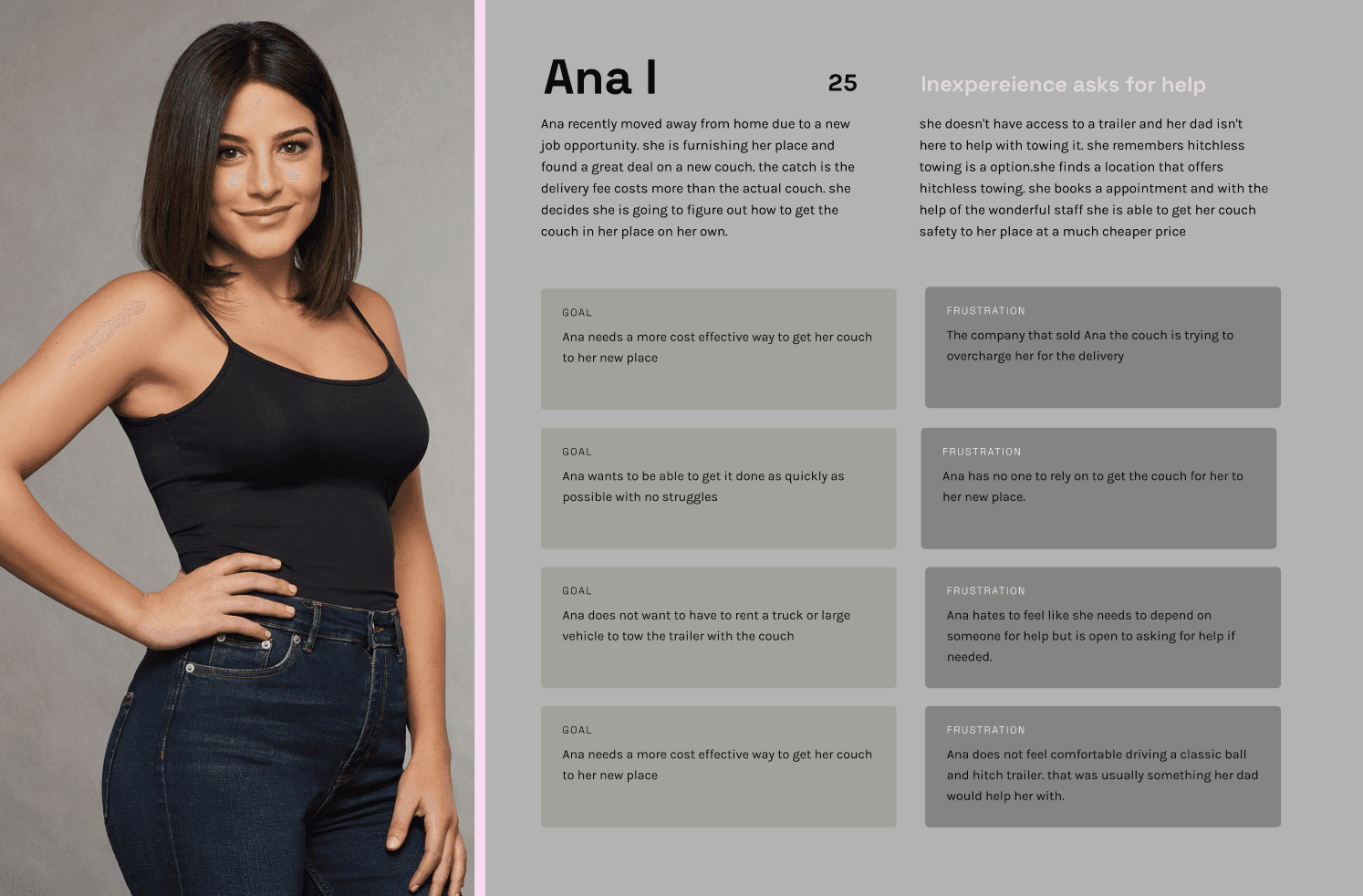
Protopersona 1
Protopersona 2
Protopersona 3
Storyboarding
We used storyboarding to help us visualize different scenarios of our protopersonas using the hitch less trailer system.
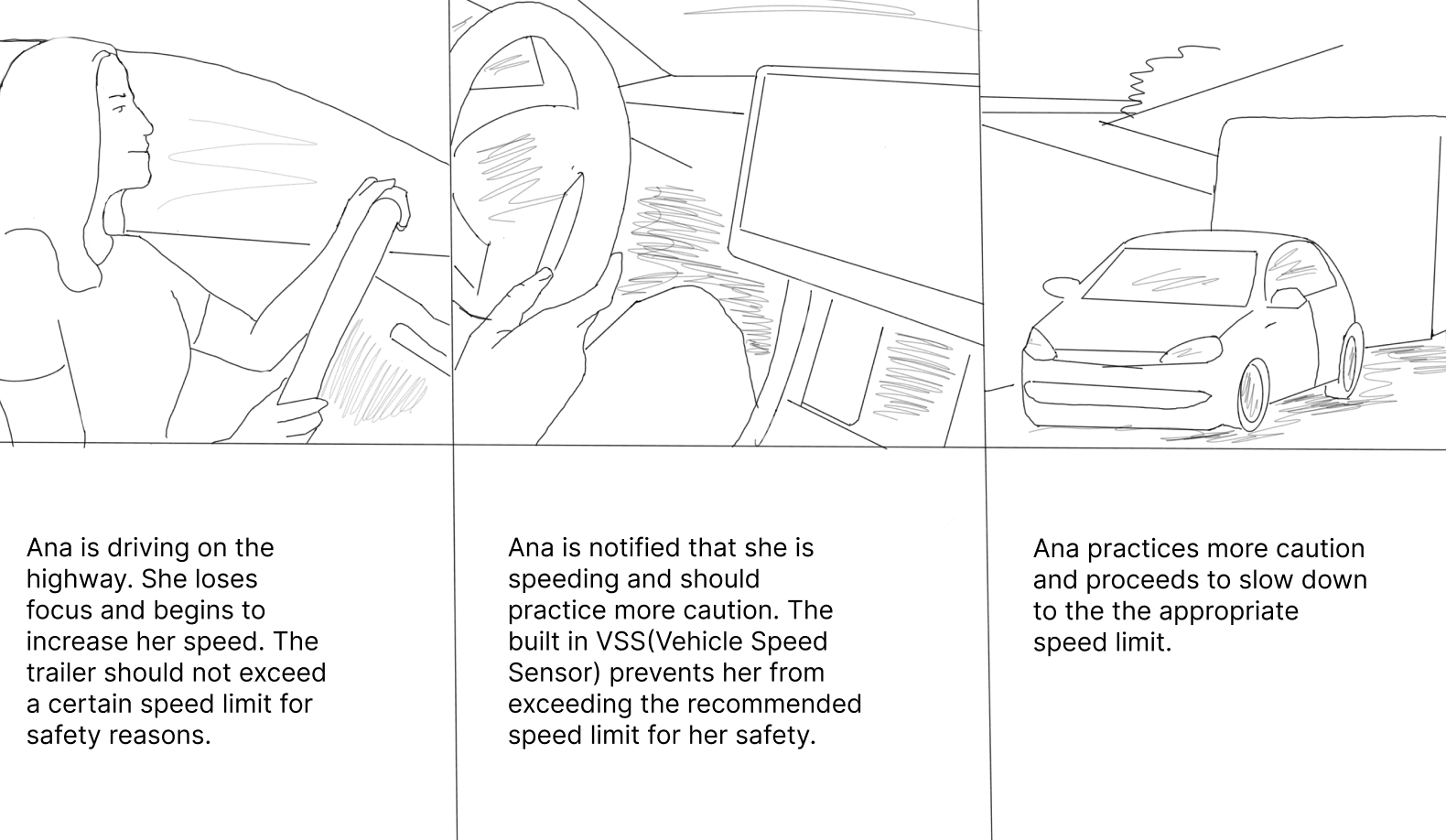
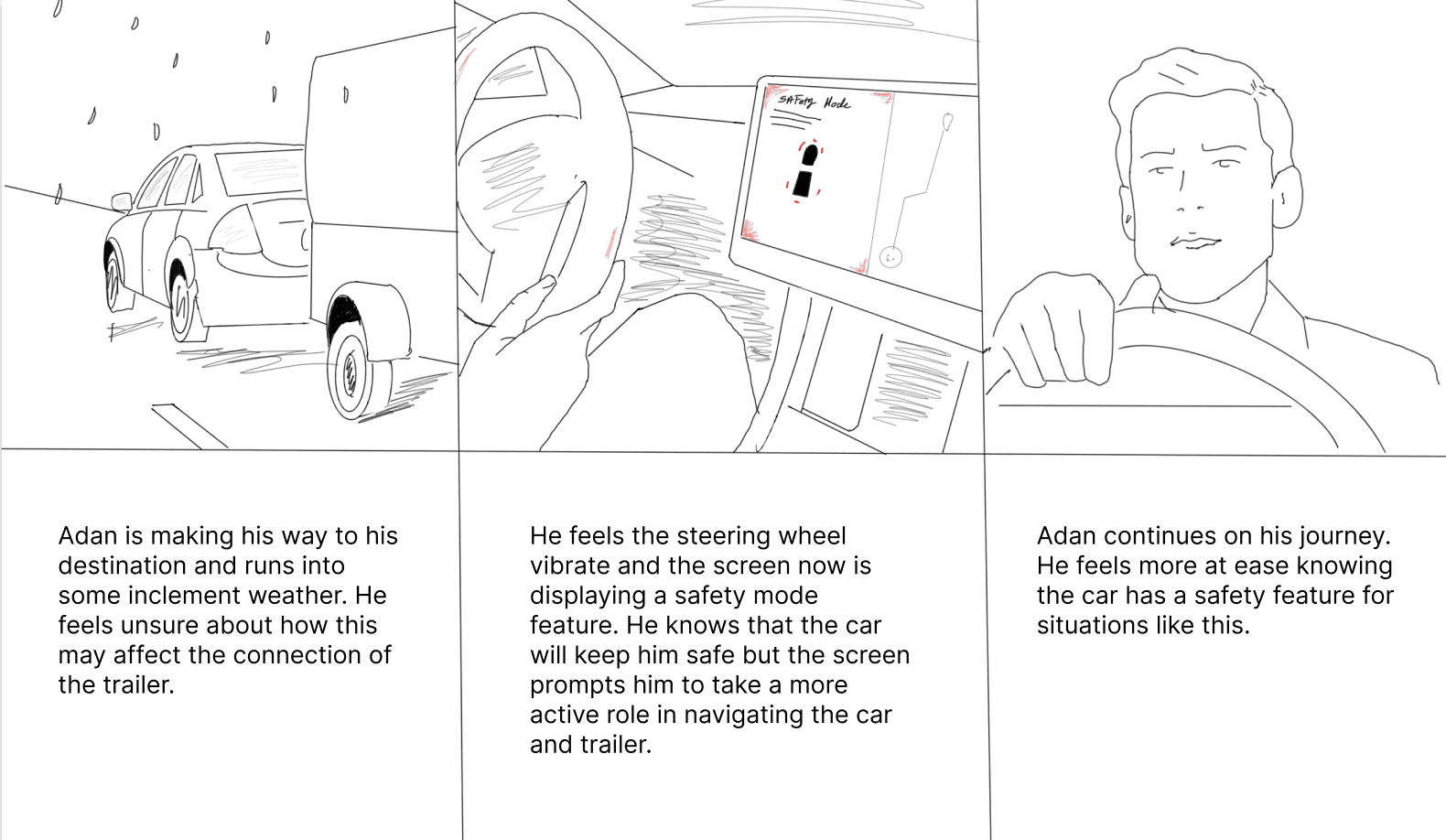
Storyboard 1: Speed Cap
Storyboard 2: Unstable Connection
03 Identify and Synthesize

Insight 1
Most people who currently rent trailers are familiar with the process and those that are not, hire others to transport their items.

Insight 3
Overcompensating on safety features eases minds of perspective drivers and latent followers of new technological releases.

Insight 2
Trust is formed between users and their vehicle through customizable features like steering wheel firmness and how the car accelerates*.
Key Inisghts
Upon analyzing our research we extracted these key insights:
*Based on Tesla Test Drive
We also identified 3 key user groups represented by our protopersonas:

Ana
Dan
Adan
Inexperienced with hitch trailers and asks for help
Inexperienced with hitch trailers and doesn’t ask for help
Experienced with hitch trailers and asks for help
The Goal
The aim to create a hitch less trailer for automated vehicles. The system has to be able to transport items safely and intact.
However, unfamiliar technology can make a challenging task more difficult so we made the onboarding process a focal point in product design.
HMW facilitate the towing experience for users with a hitch less system by establishing trust between the user and new technology.
04 Ideation
Preliminary Designs
When designing our hitch less trailer system, began with concept maps for the actual model. Our system includes technology like radar, ultrasonic sensors, LiDar, and VSS among others to work. We created a sensor map to visualize key points for necessary function.
System Design
Concept and Sensor Map
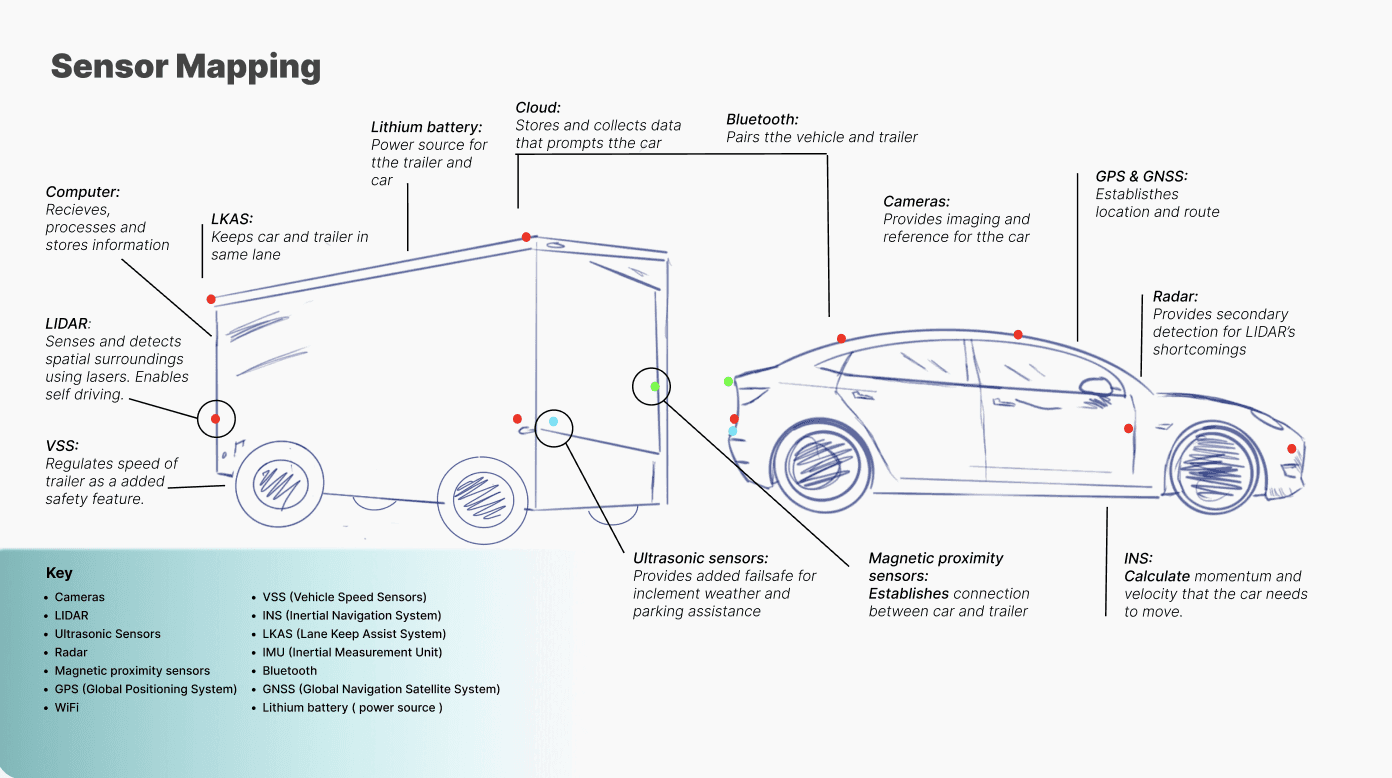
UI design
We wanted a smooth onboarding process that explains how the hitch less system works along with visual aids for further understanding.
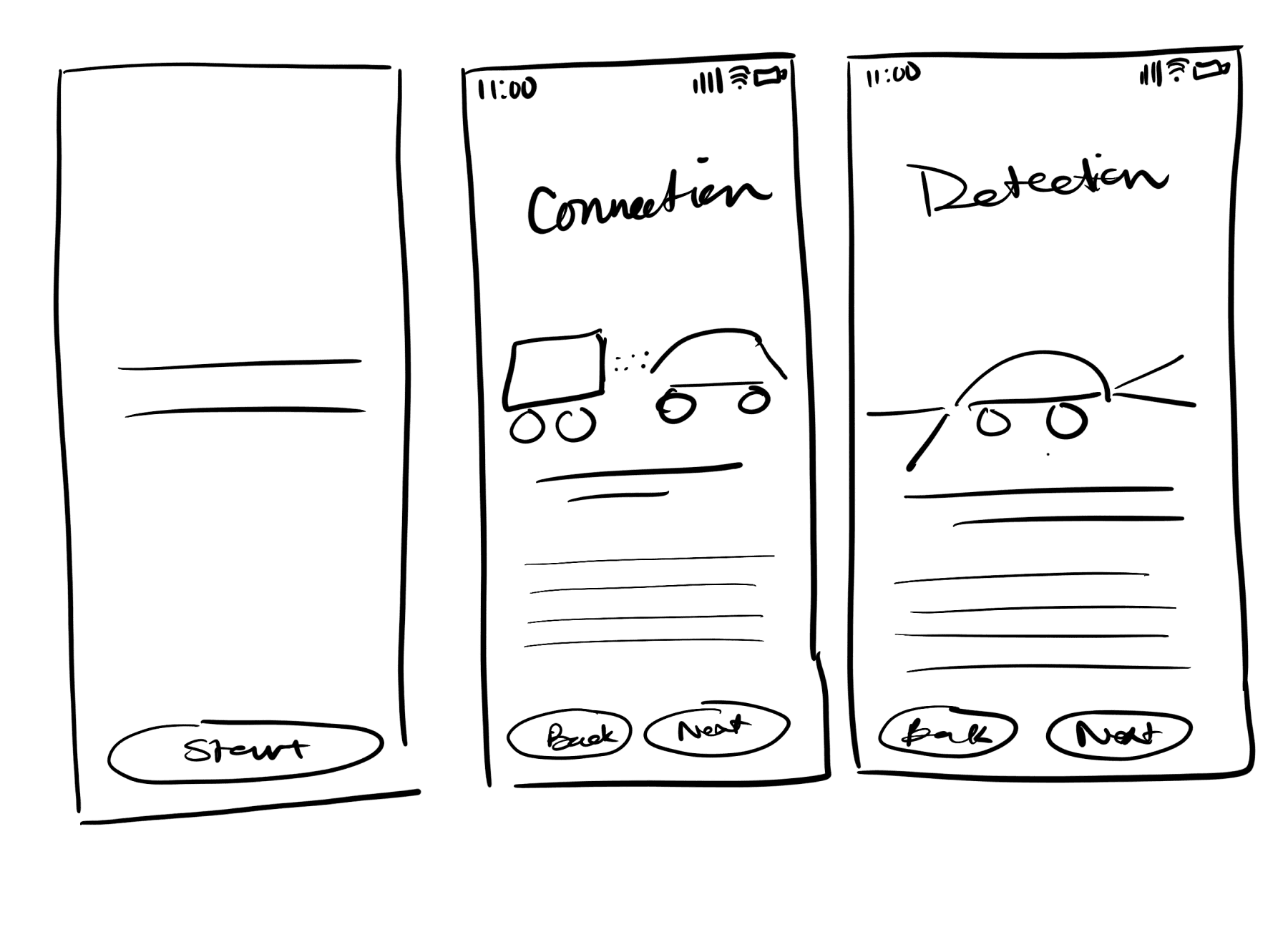
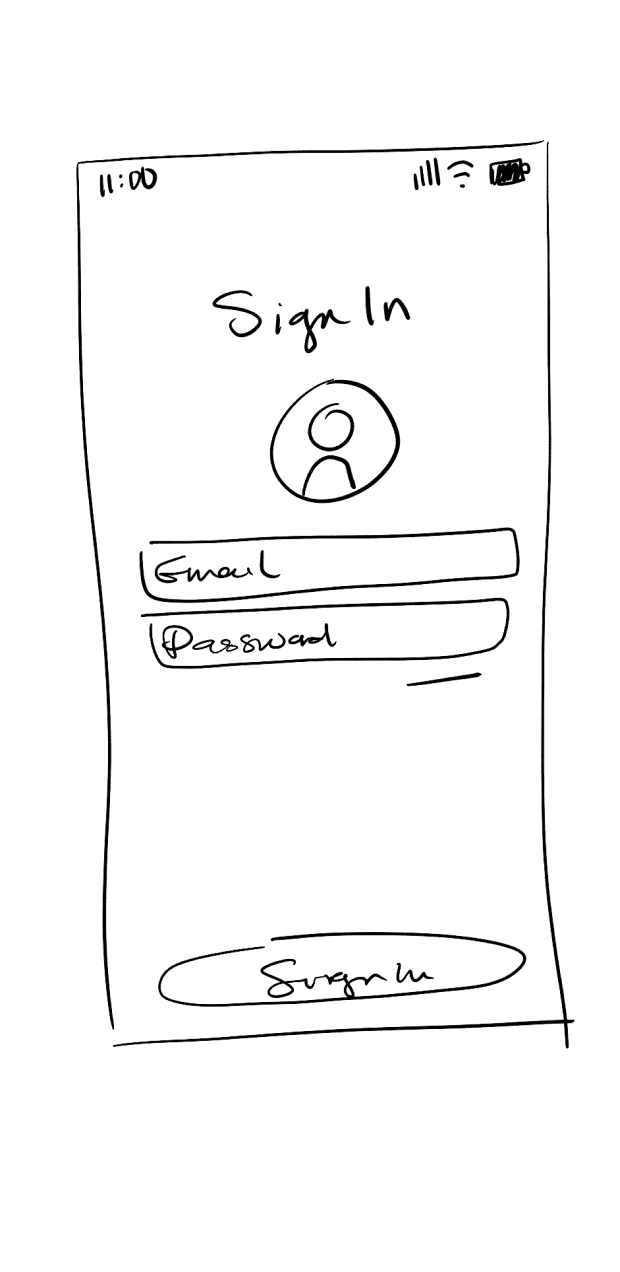
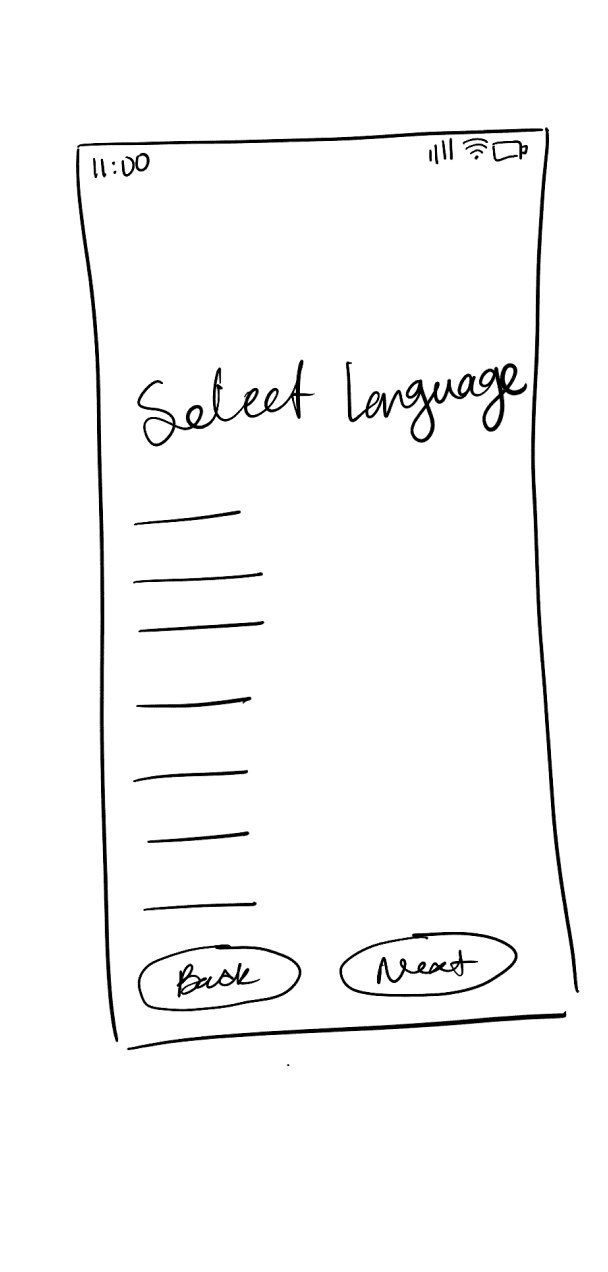
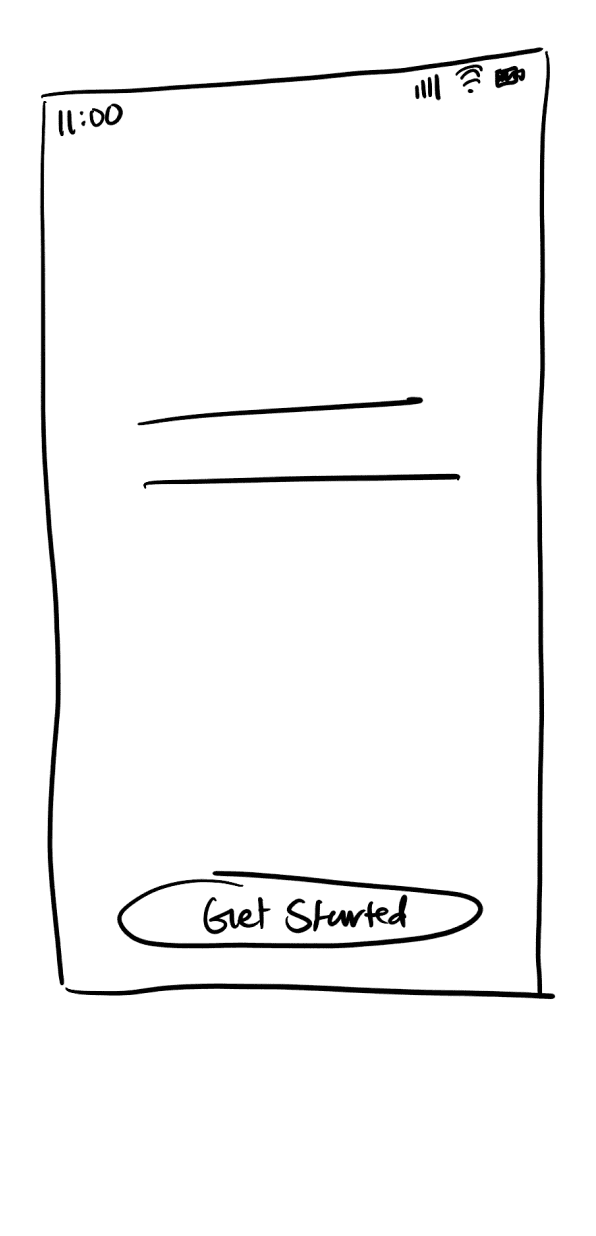
Onboarding: Sign In
Onboarding: Hitch less System Education
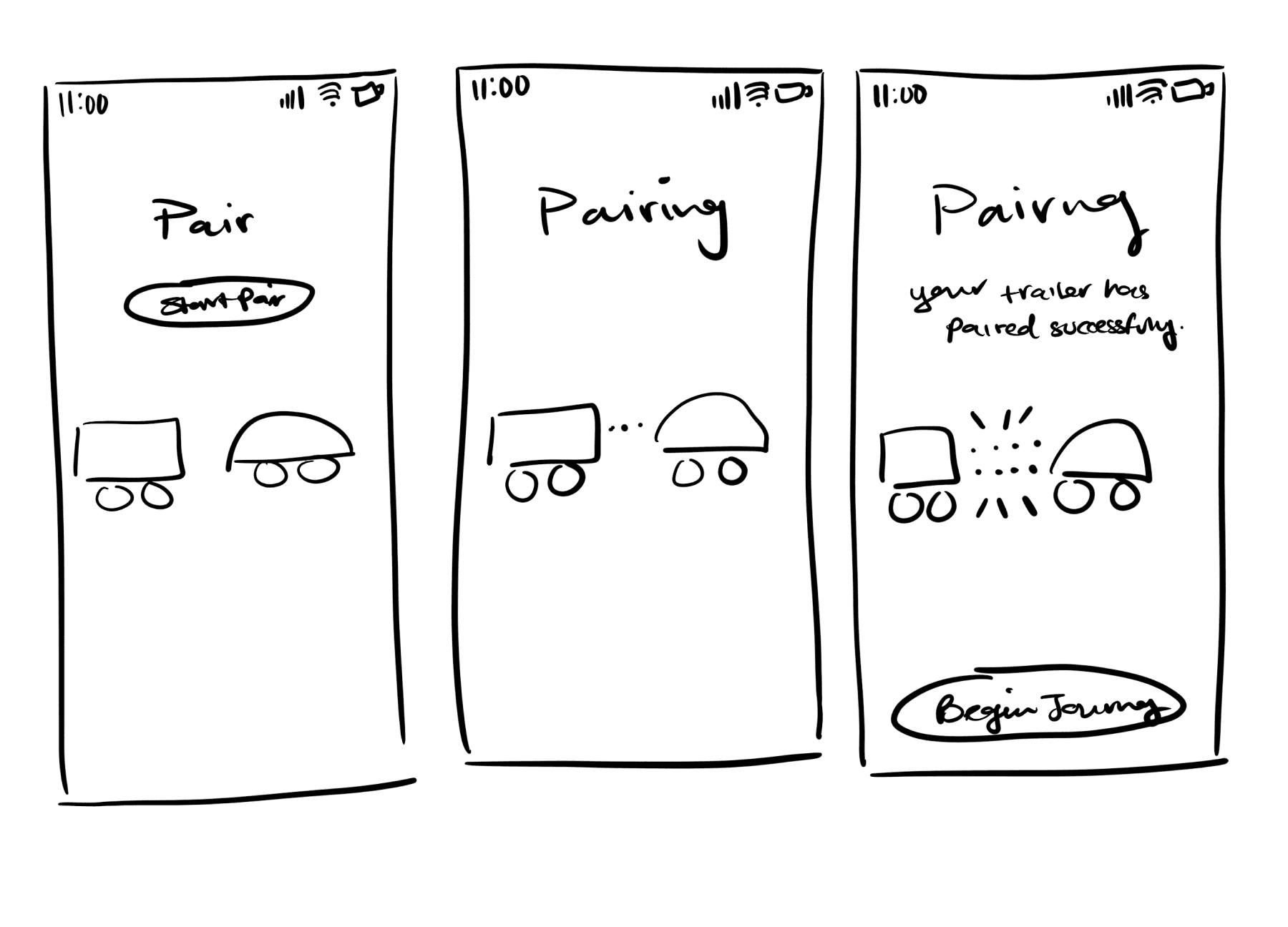
Onboarding: Pairing Trailer
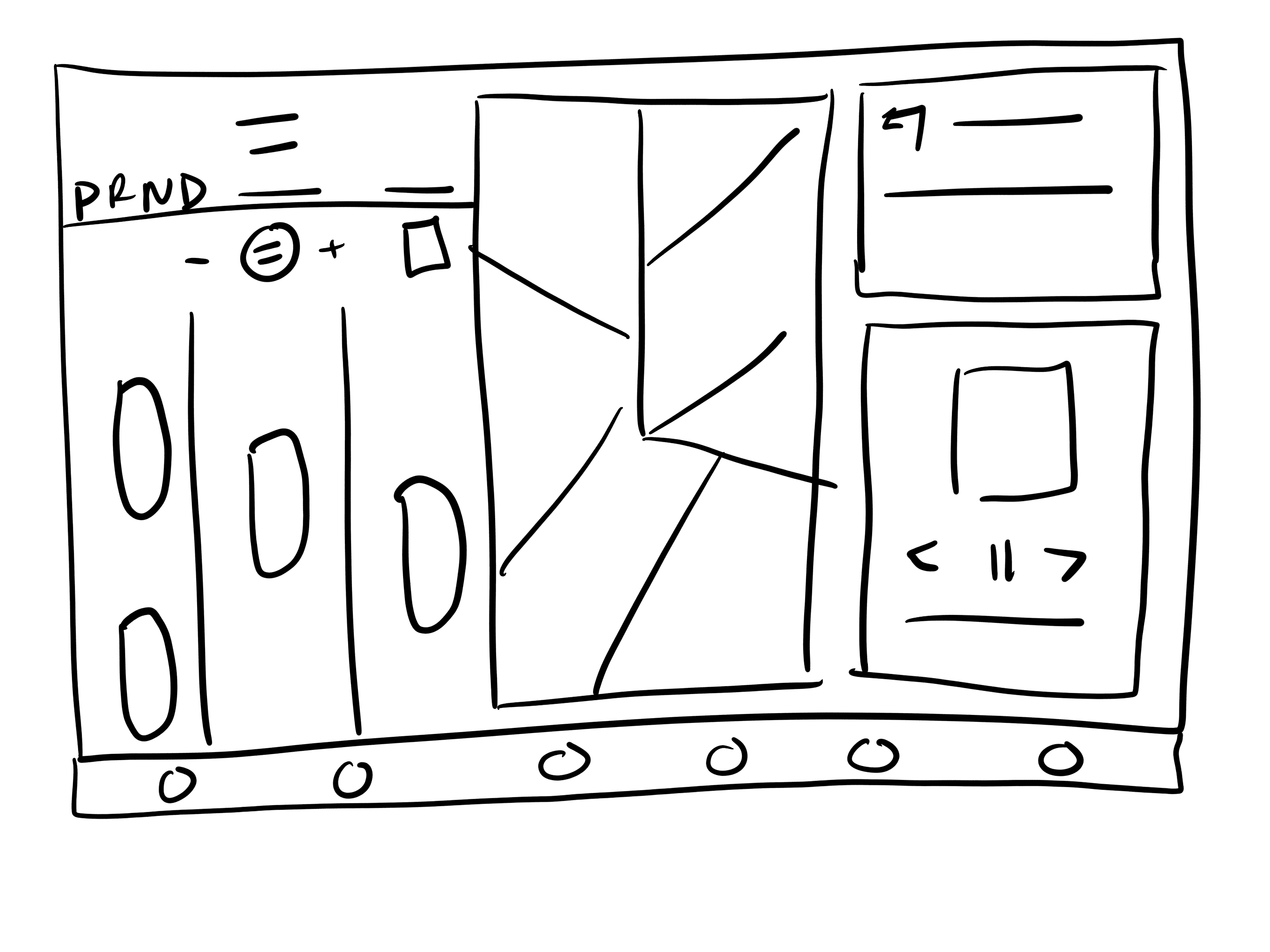
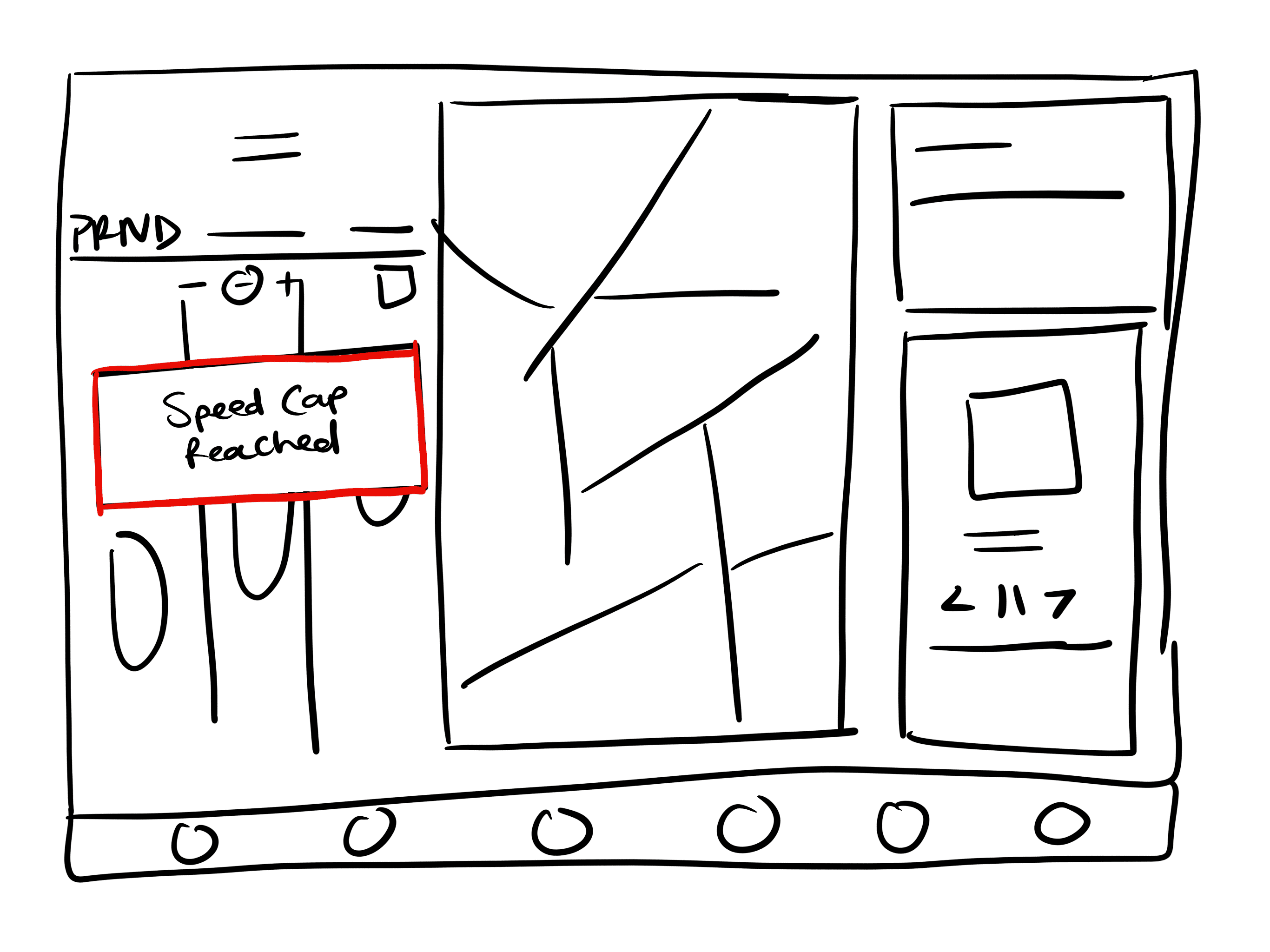
Navigation: Speed Cap
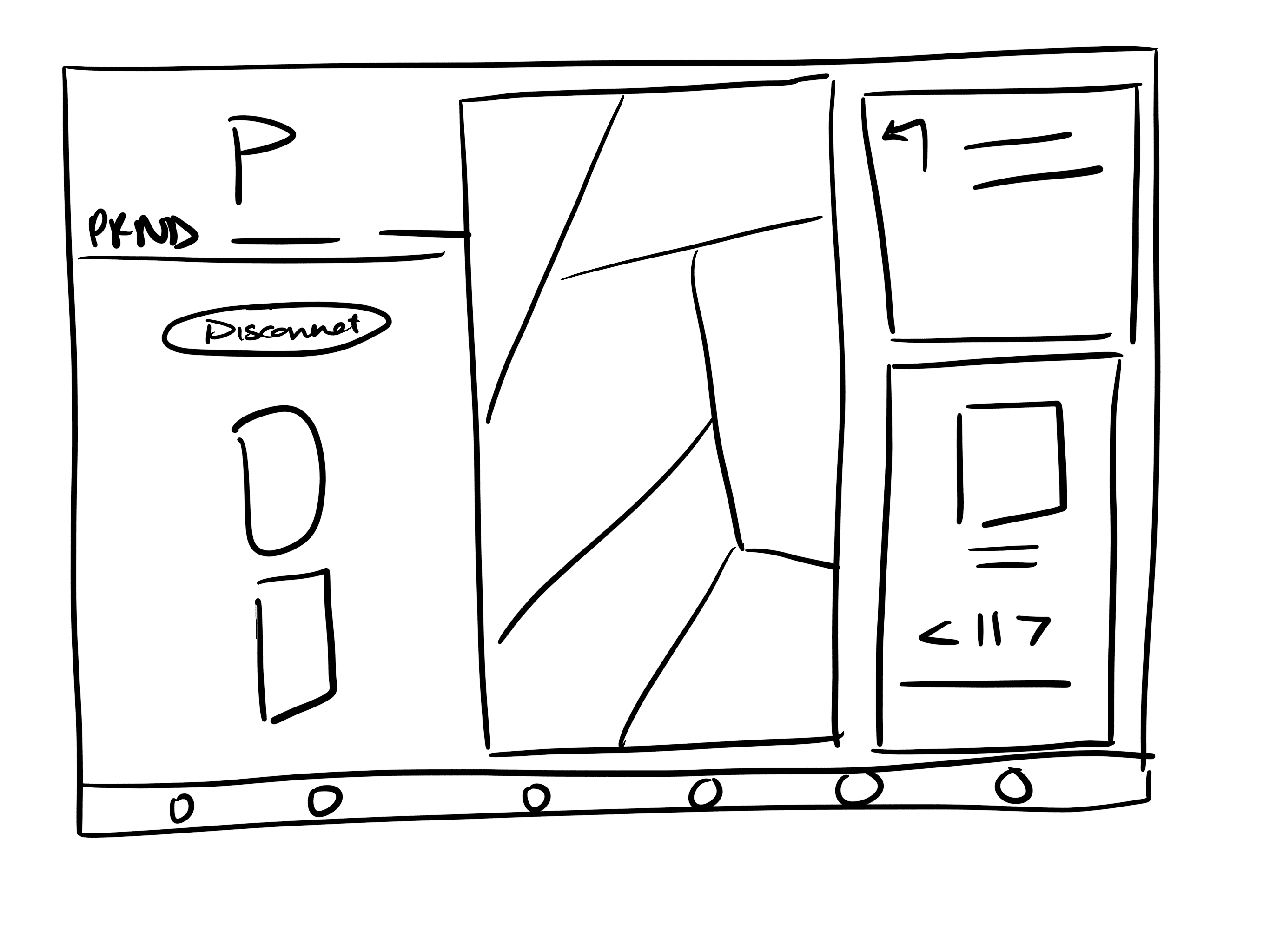

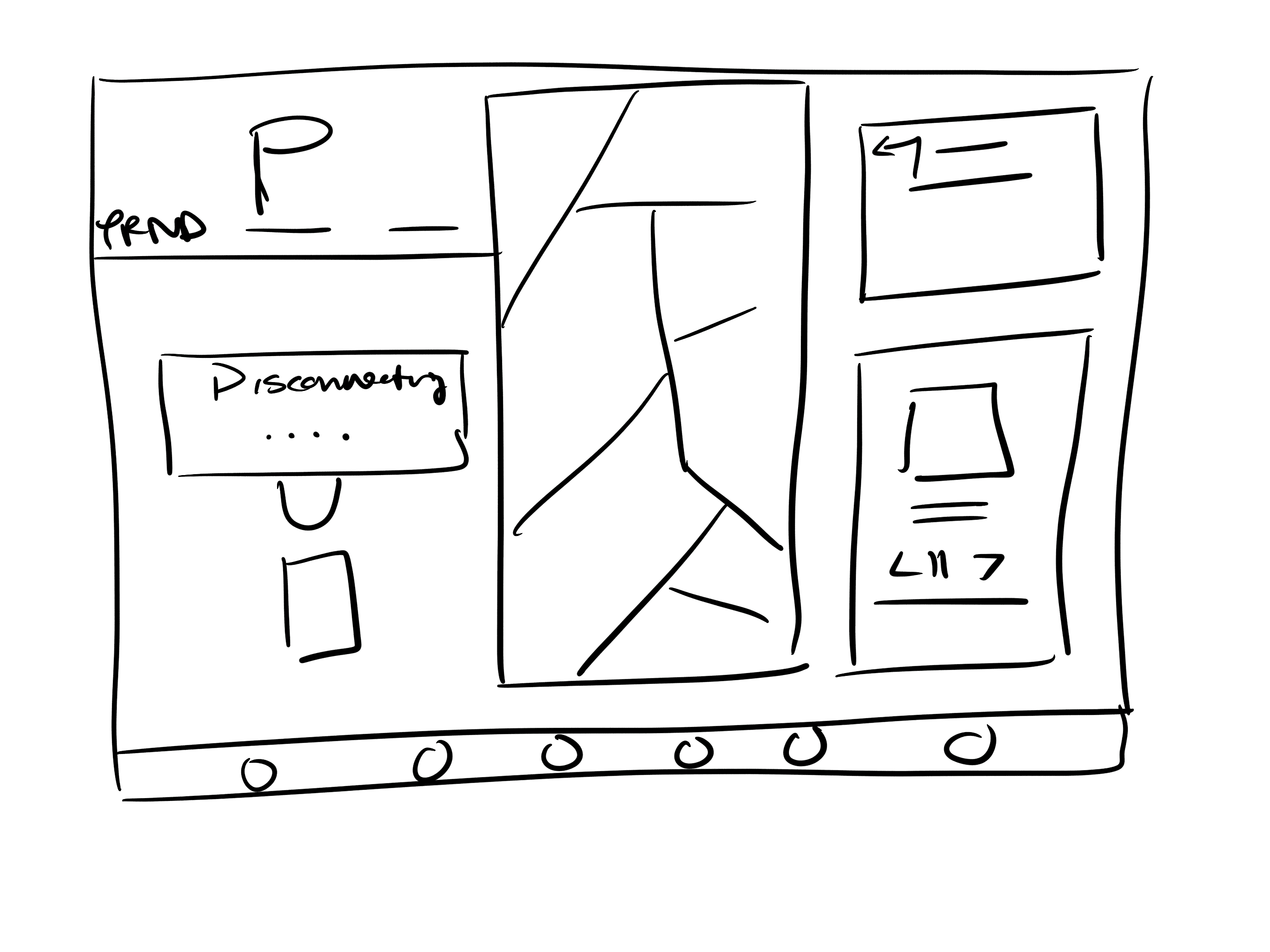
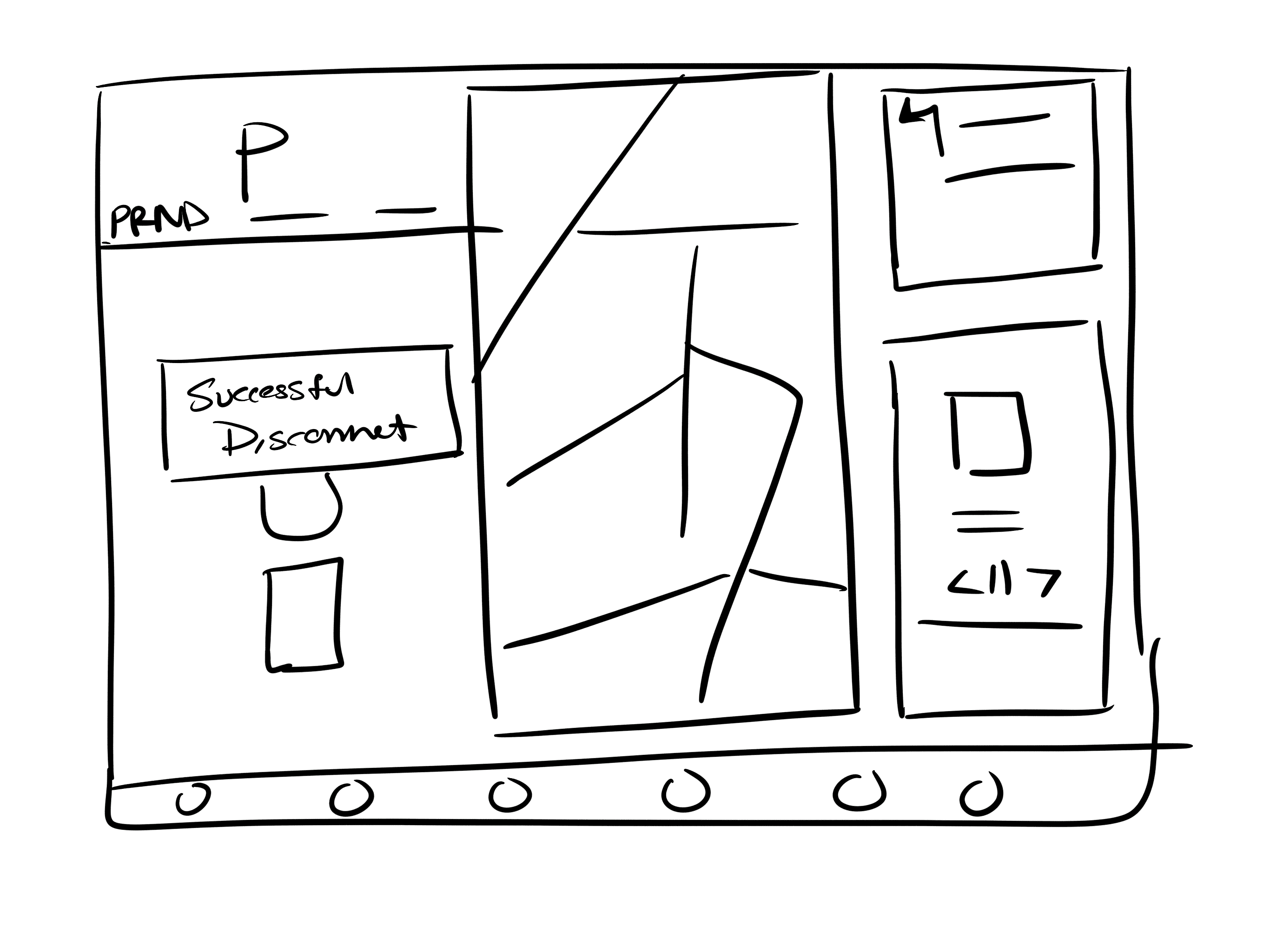
Navigation: Trailer Disconnect
05 Execution
Final Designs
For testing and production limitations, our final designs are solely our user interface. We wanted to keep a similar visual language to automated vehicles in the current market(Tesla) for a more seamless experience.



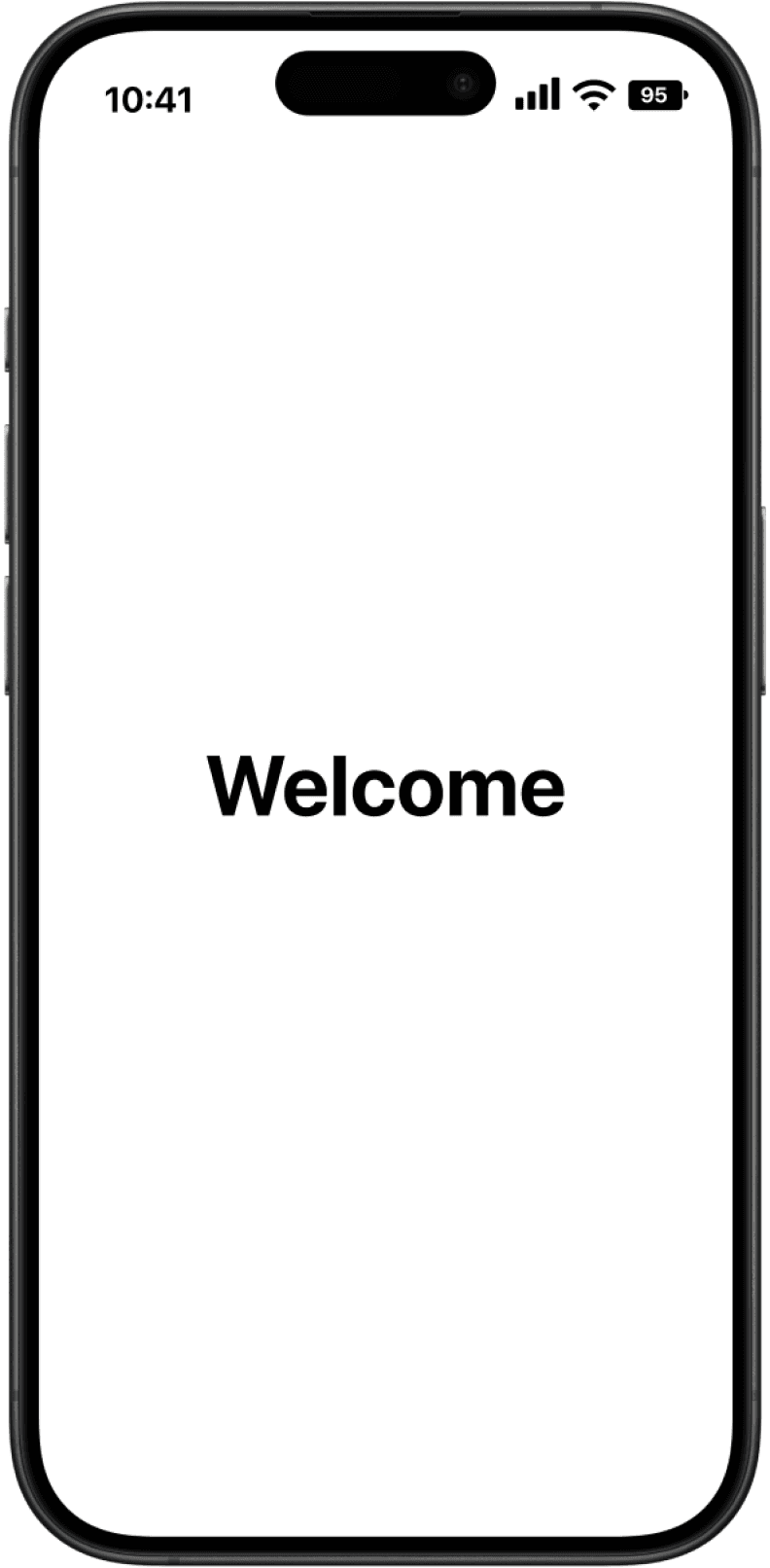
Onboarding: Sign In
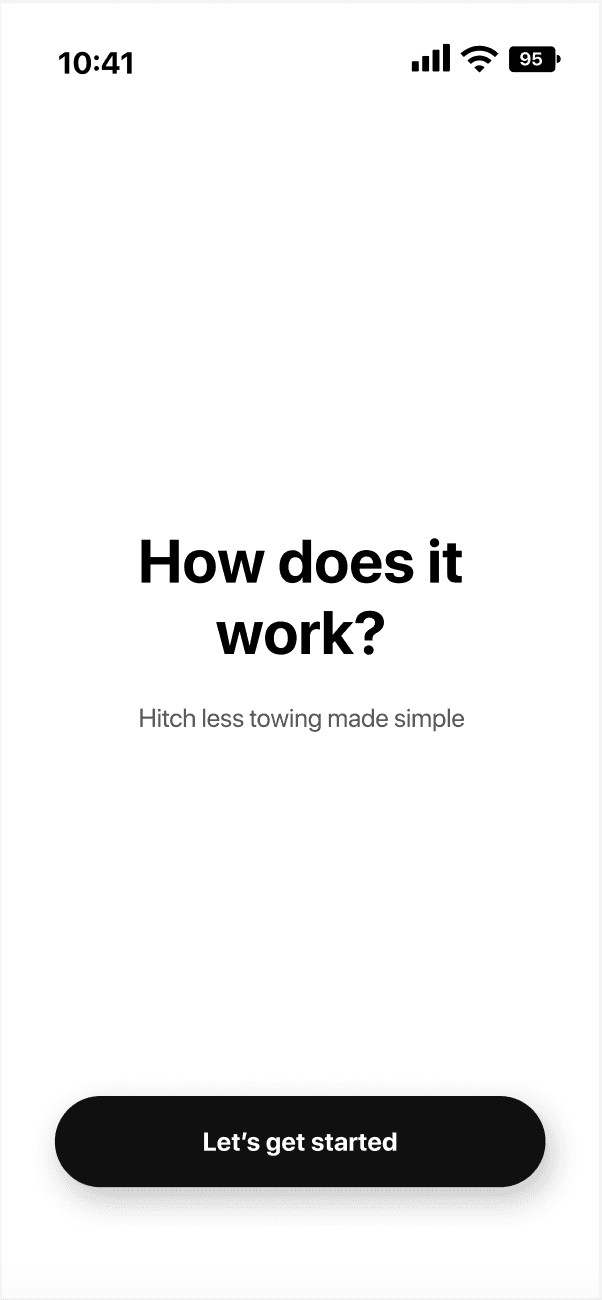
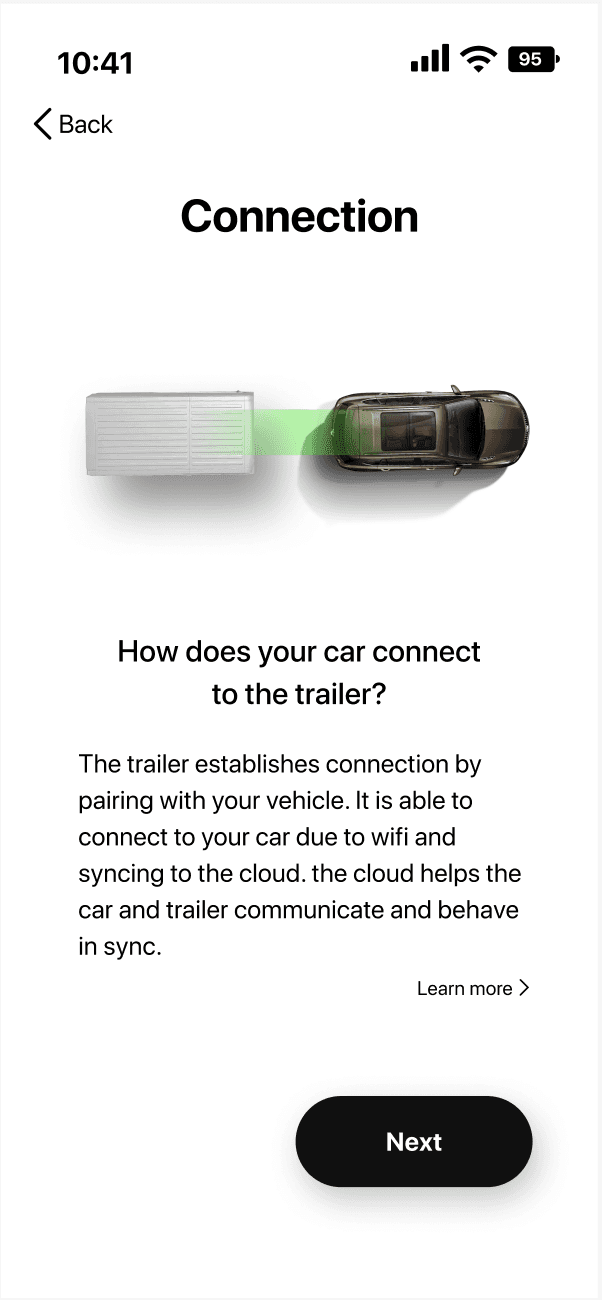
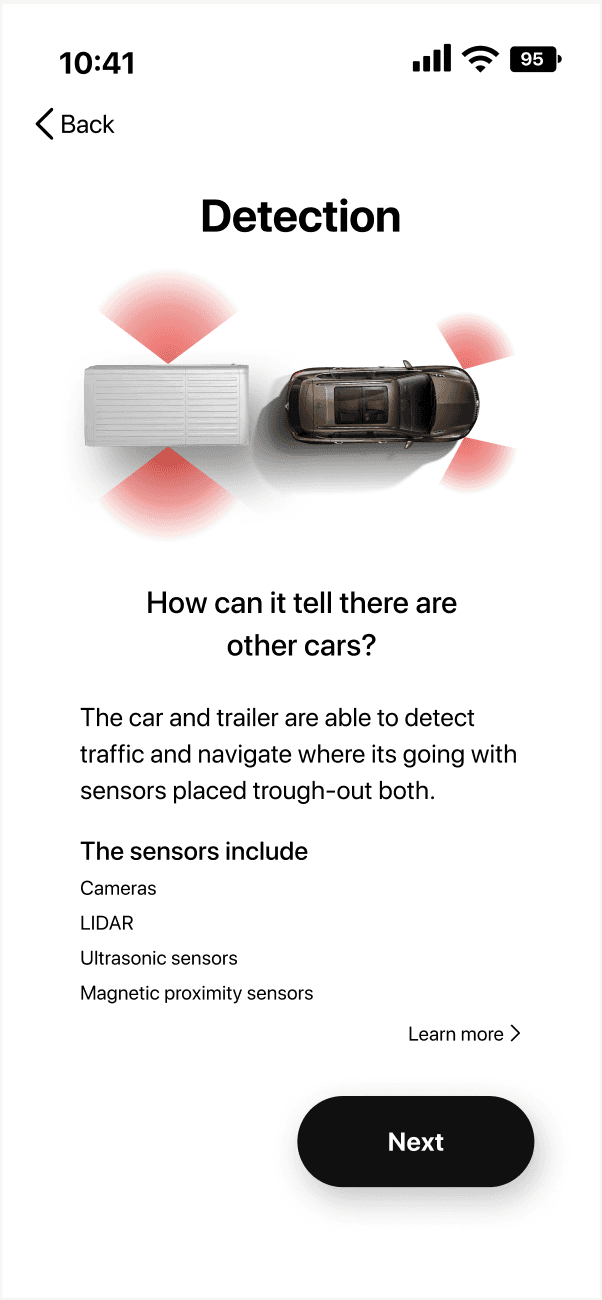
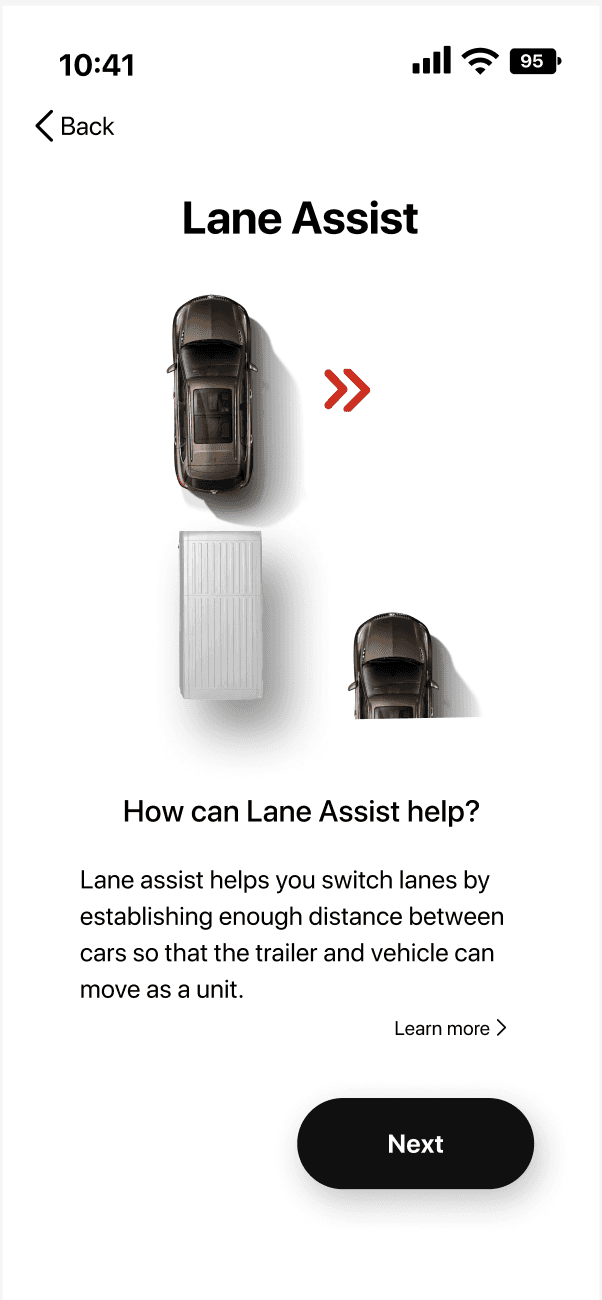
Onboarding: Hitch less System Education
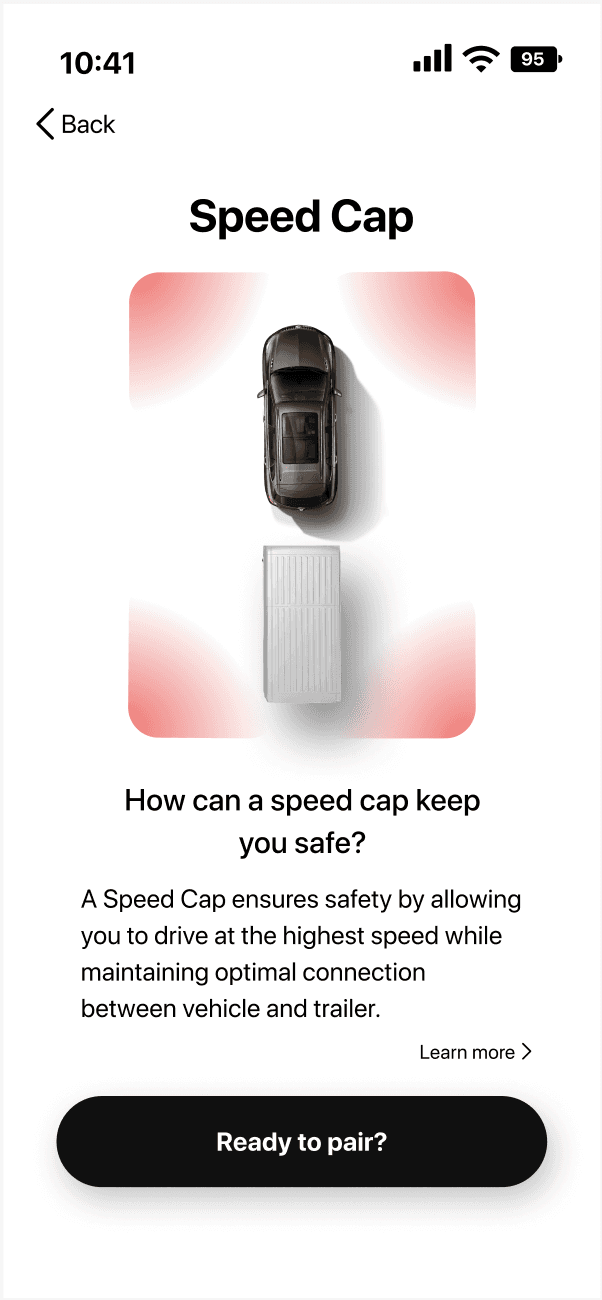
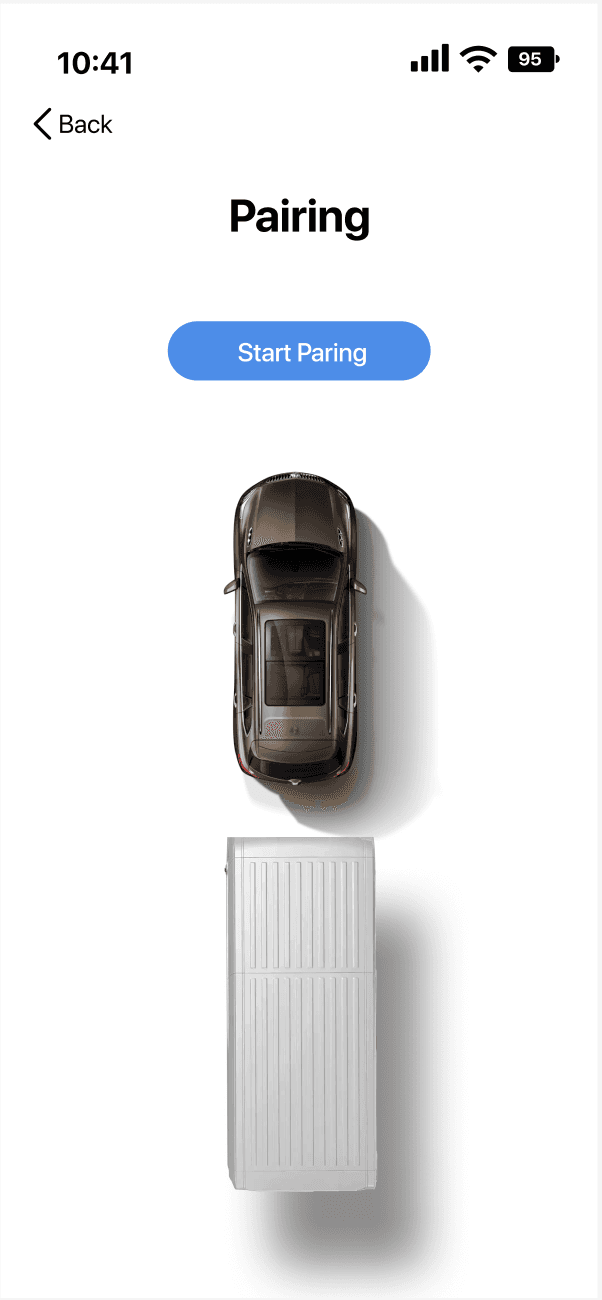
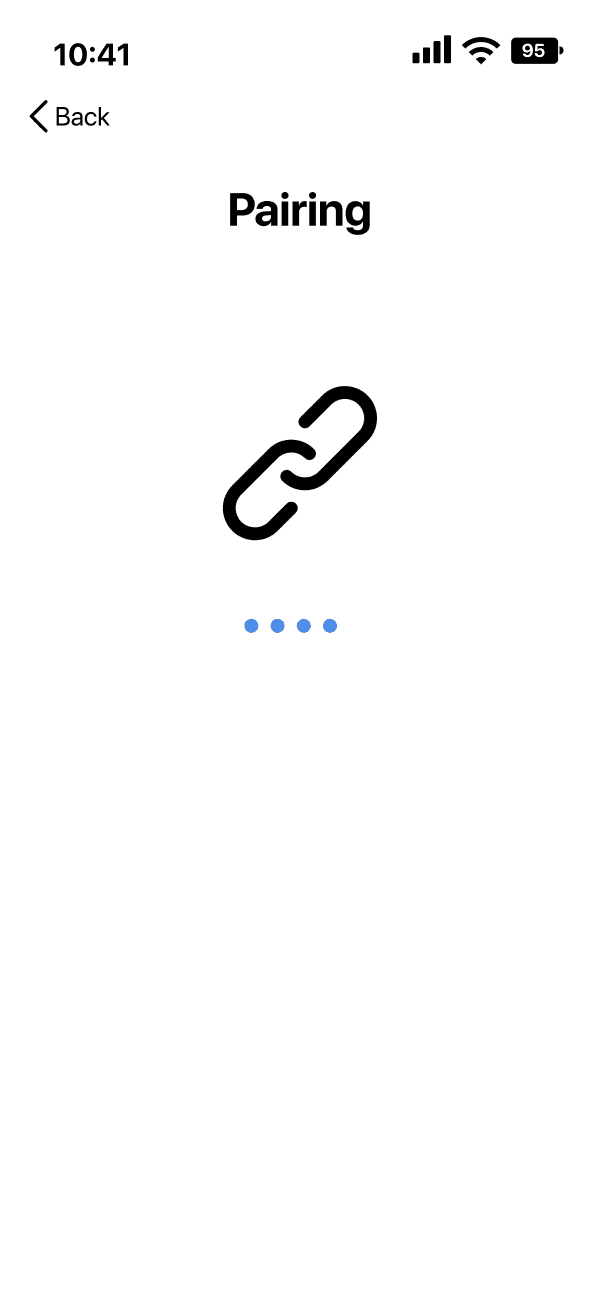
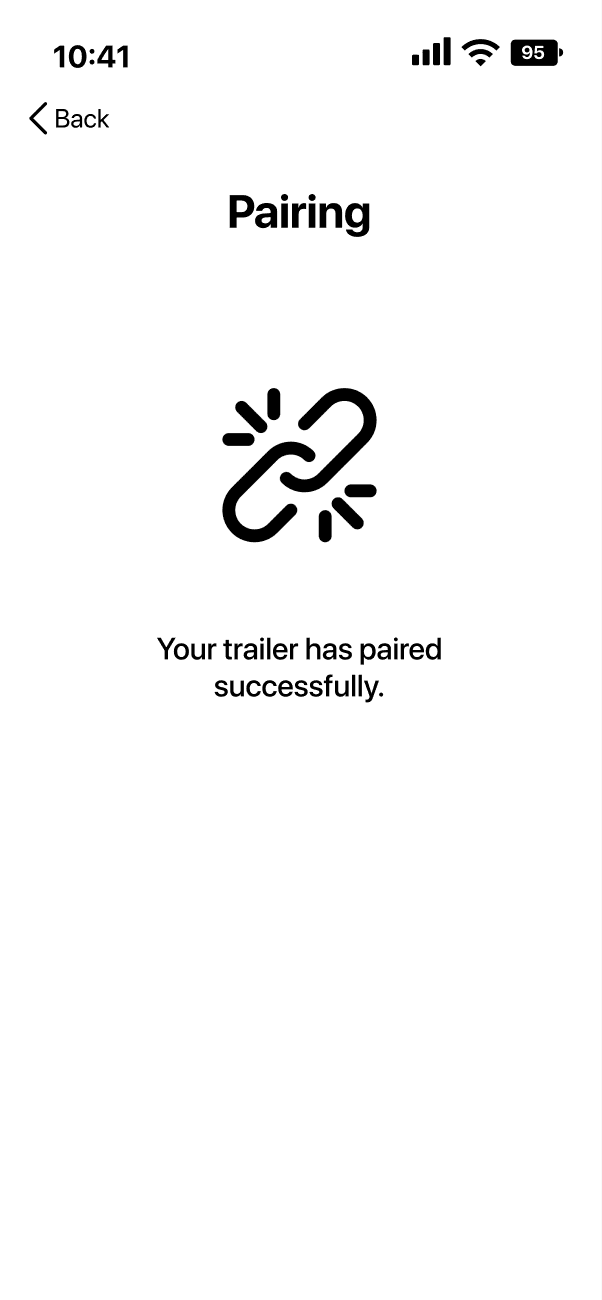

Vehicle Navigation
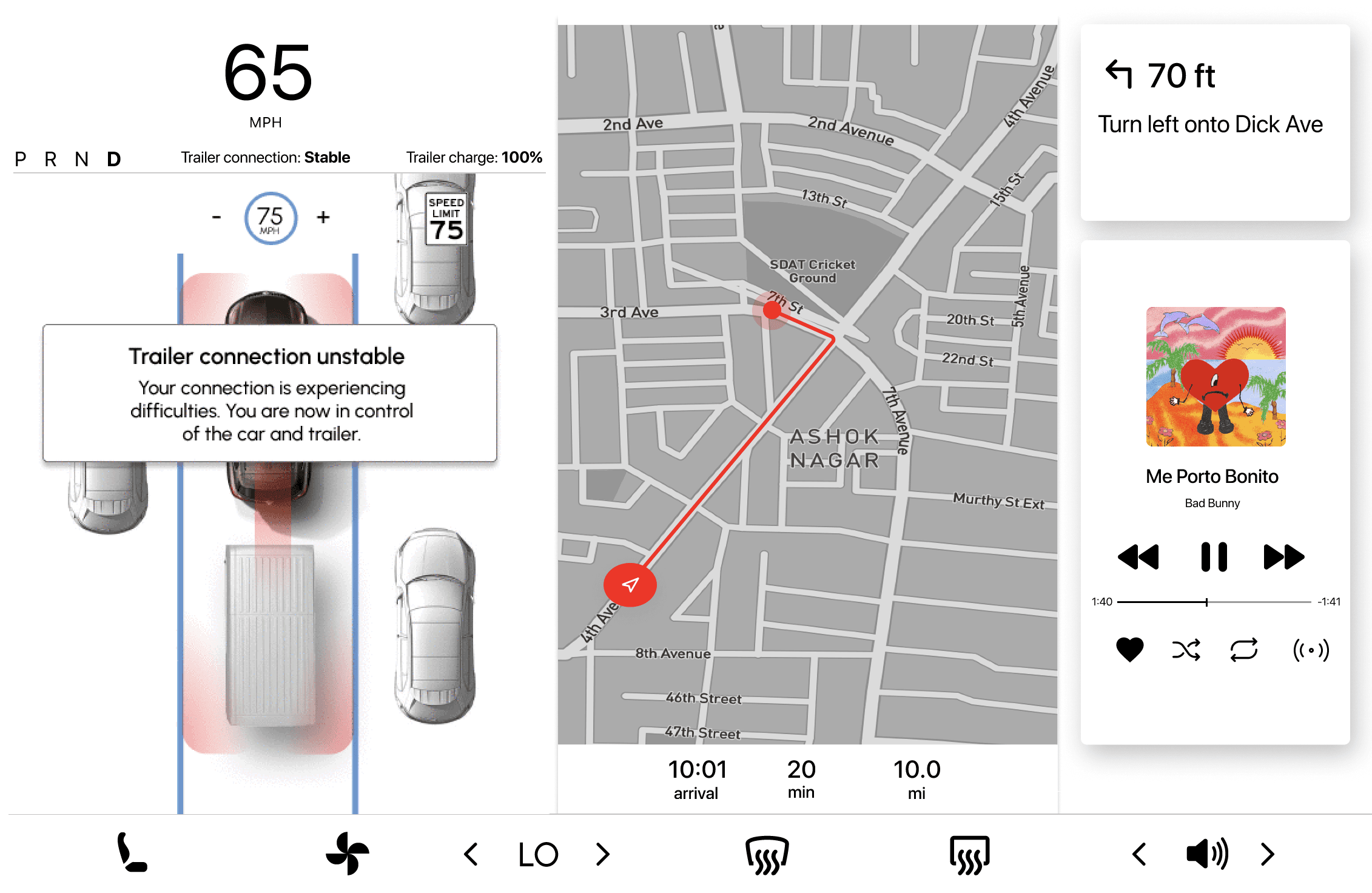
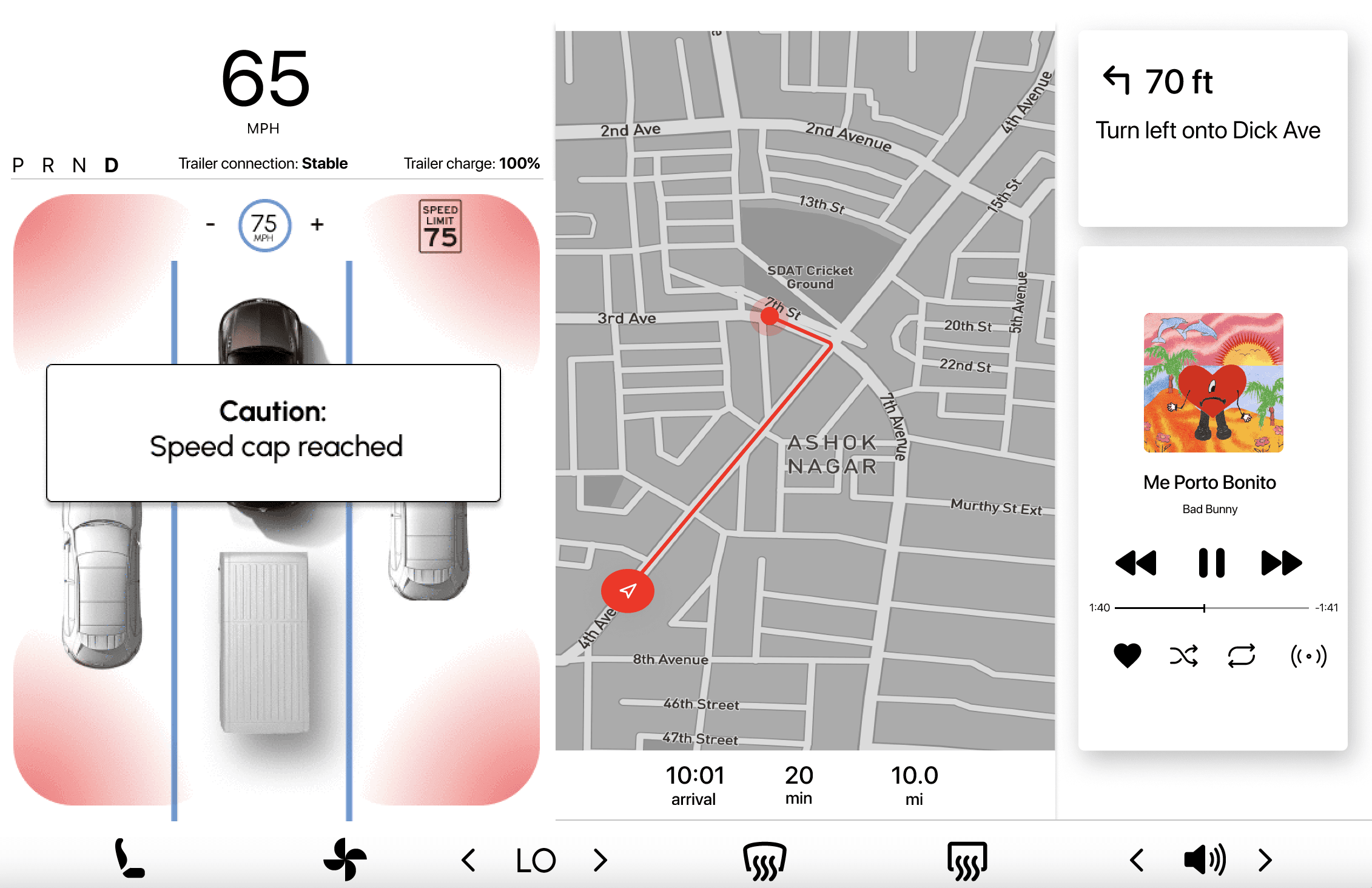
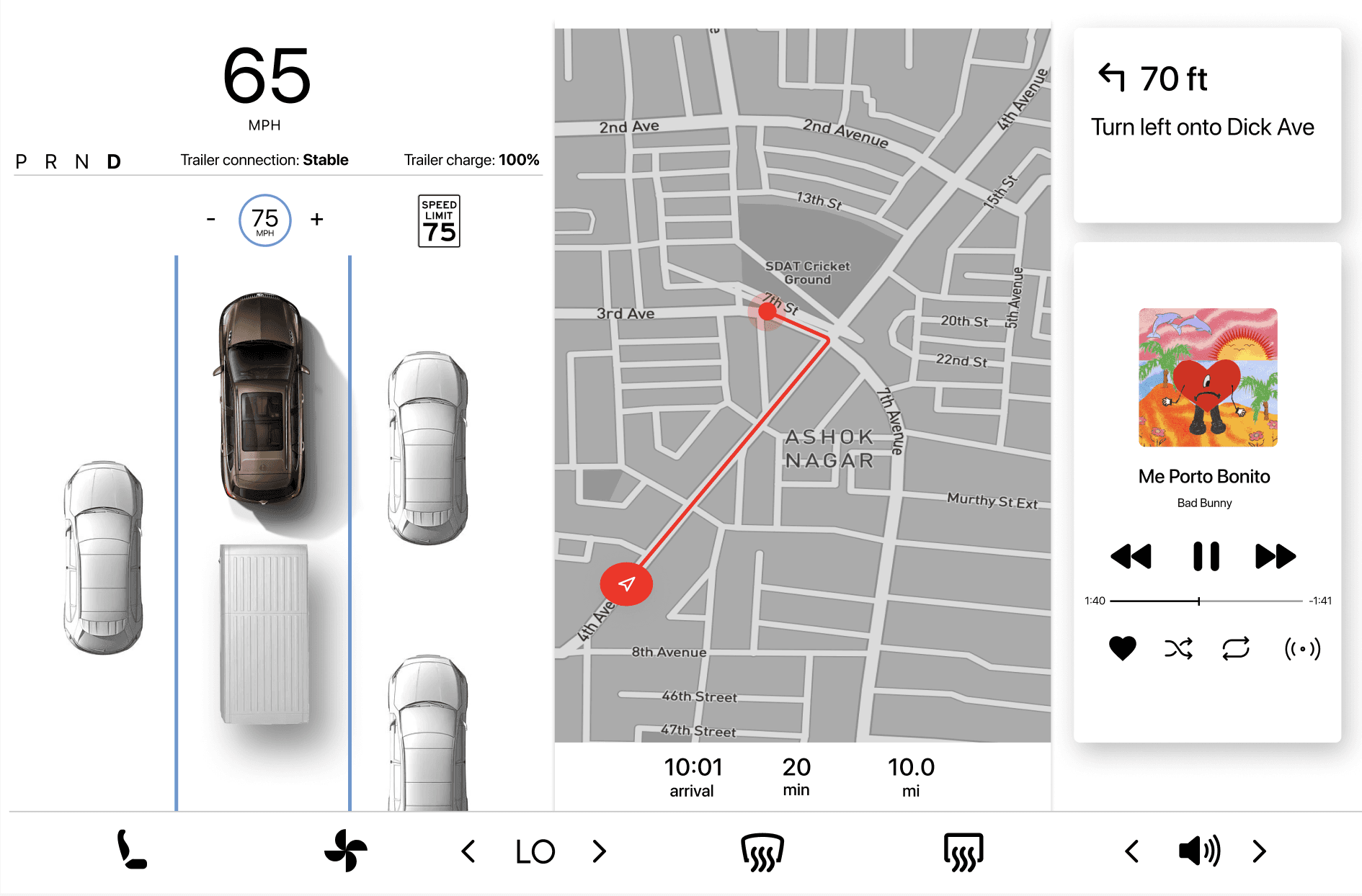
Safety Features
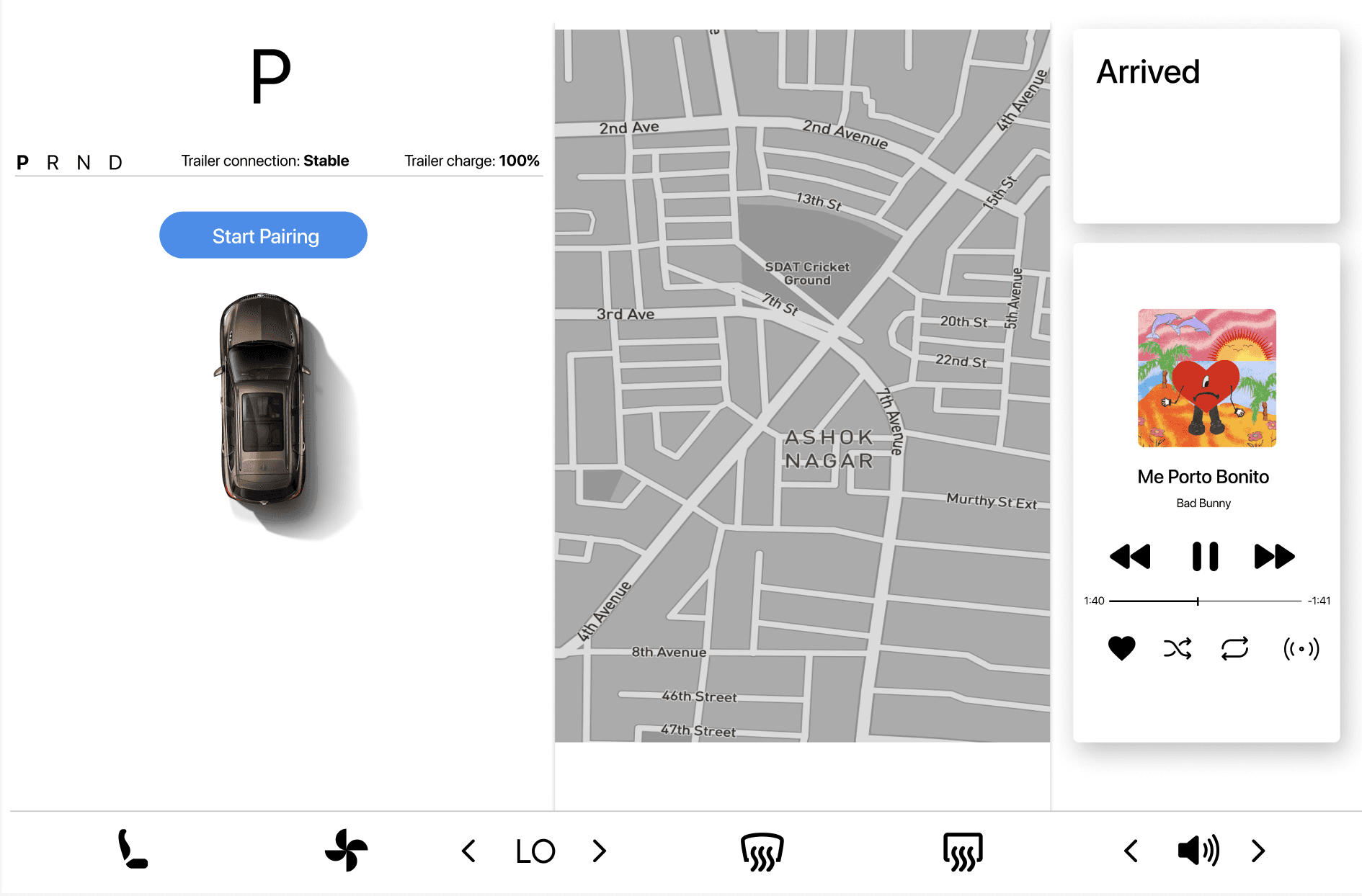
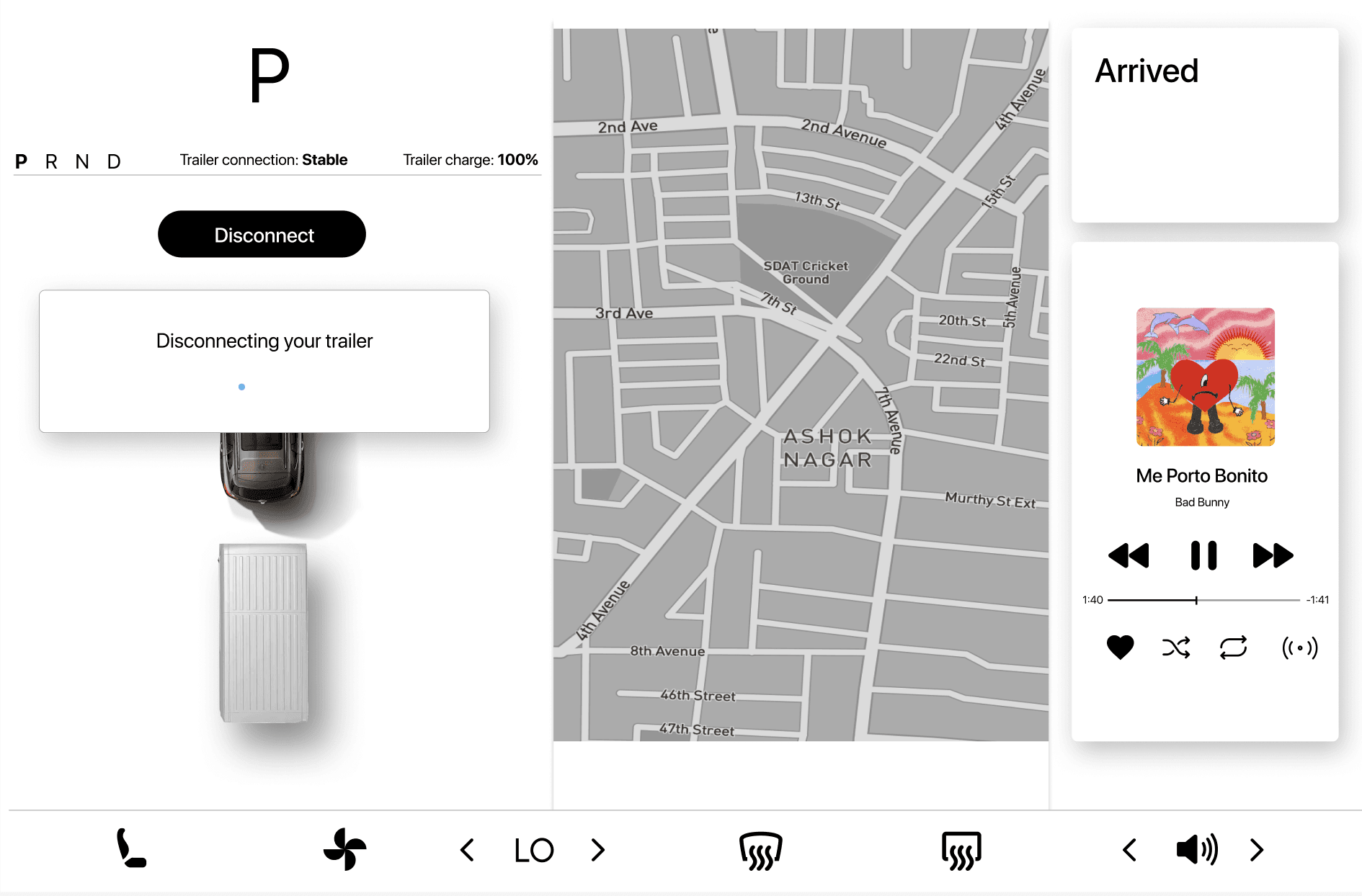
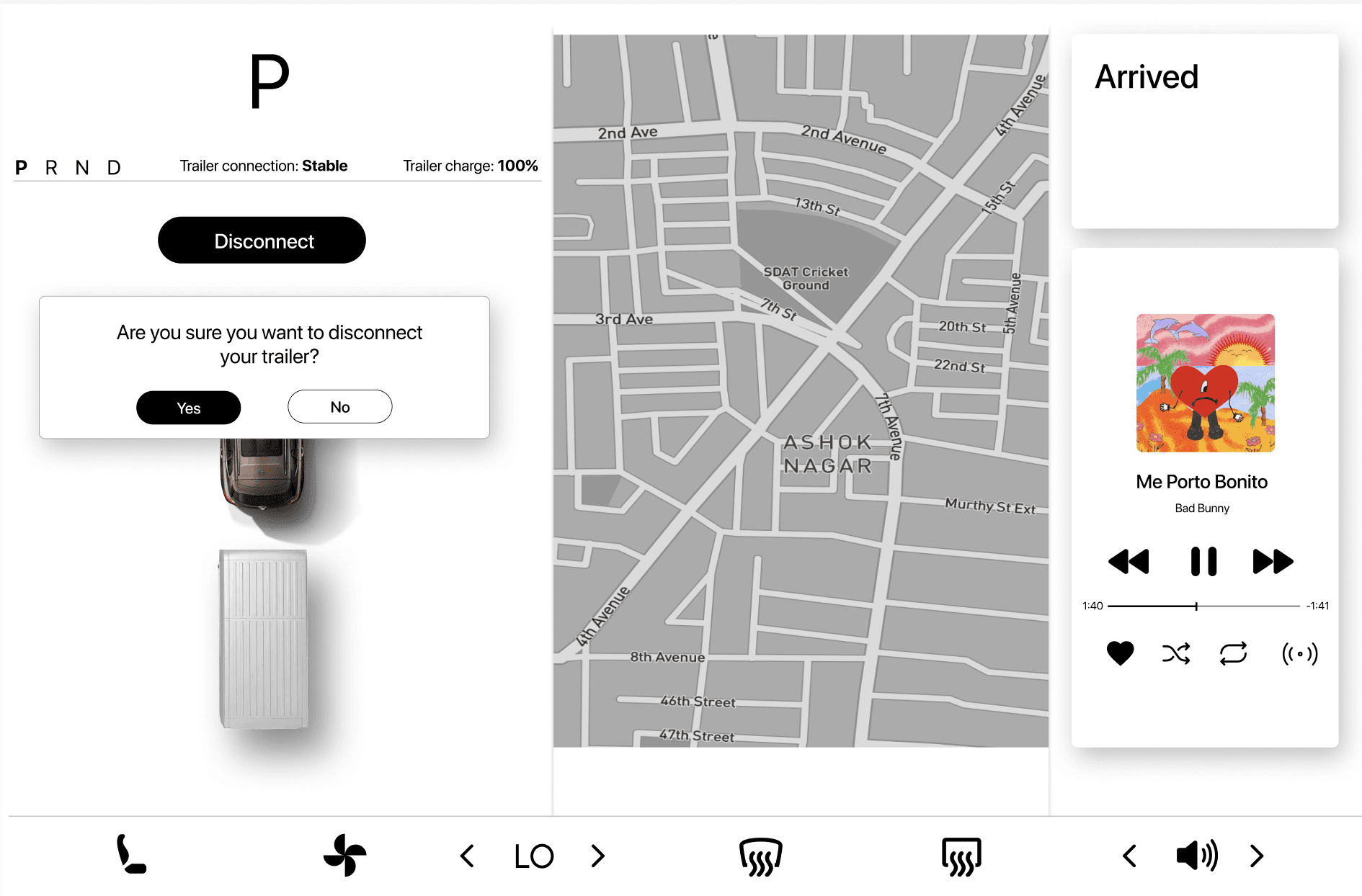
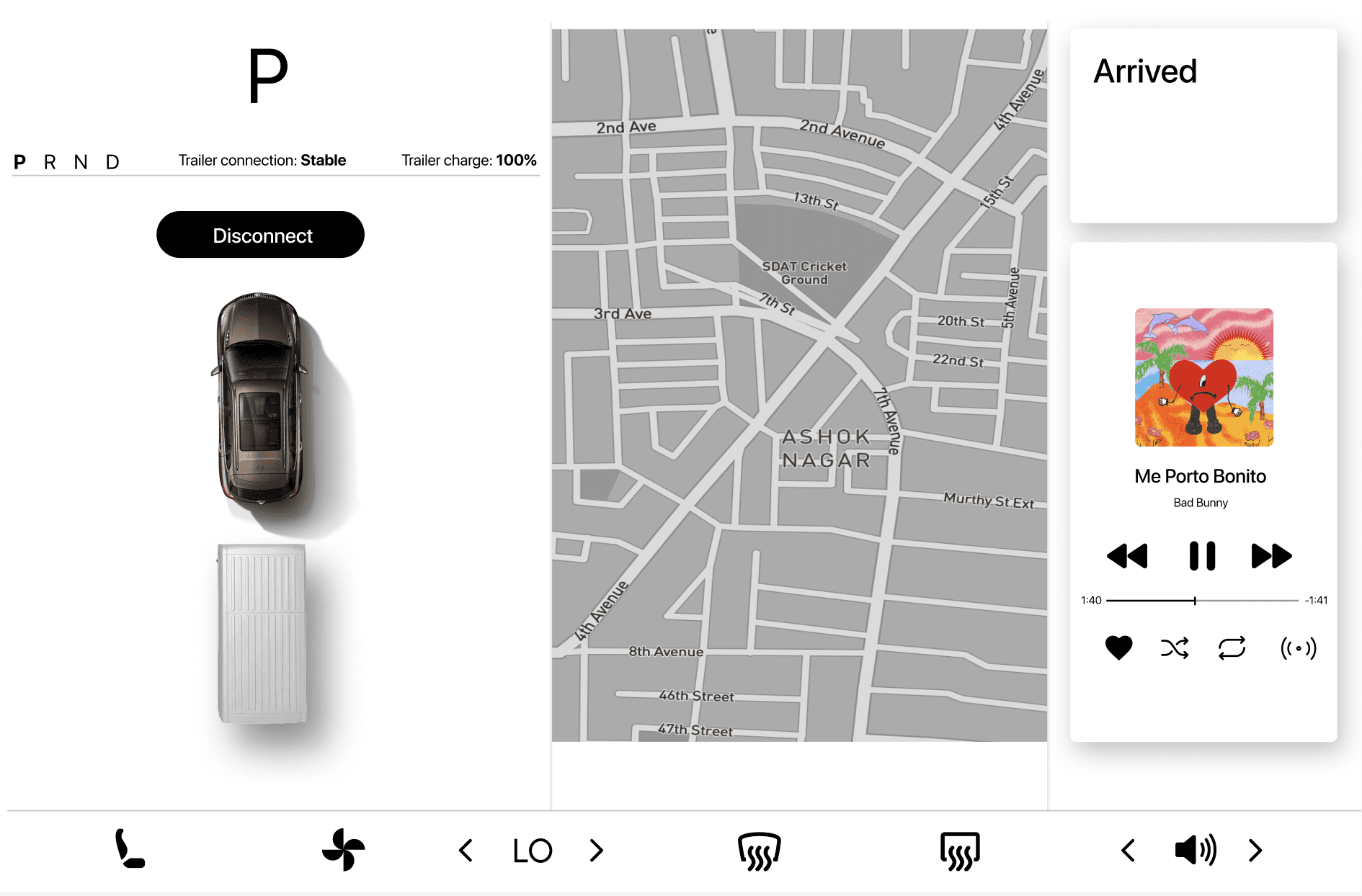
Trailer Disconnect

06 Next Steps
This project provided an opportunity to design for the future. It allows for conceptualization of a business analysis as well as engineering and software development. Immediate next steps would include material selection and prototyping to be able to conduct rigorous testing identify and fix any issues with stability, control, and safety.

